Looking for the best things to do in Mauritius?
Most of the year, we focus on exploring our greater backyard. Otherwise, we wouldn’t be able to call ourselves local adventurers. But once a year, we plan a big international trip, and this was by far the biggest one we’ve taken. If we dug a hole through the earth from Vegas, it comes out very close to Mauritius.
During our seven days here, we relaxed on the beaches, snorkeled, flew over an underwater waterfall, visited a national park, discovered the island’s unique history at a UNESCO site, and so much more. Here’s everything we learned, including our mistakes, so you can make your trip even better.
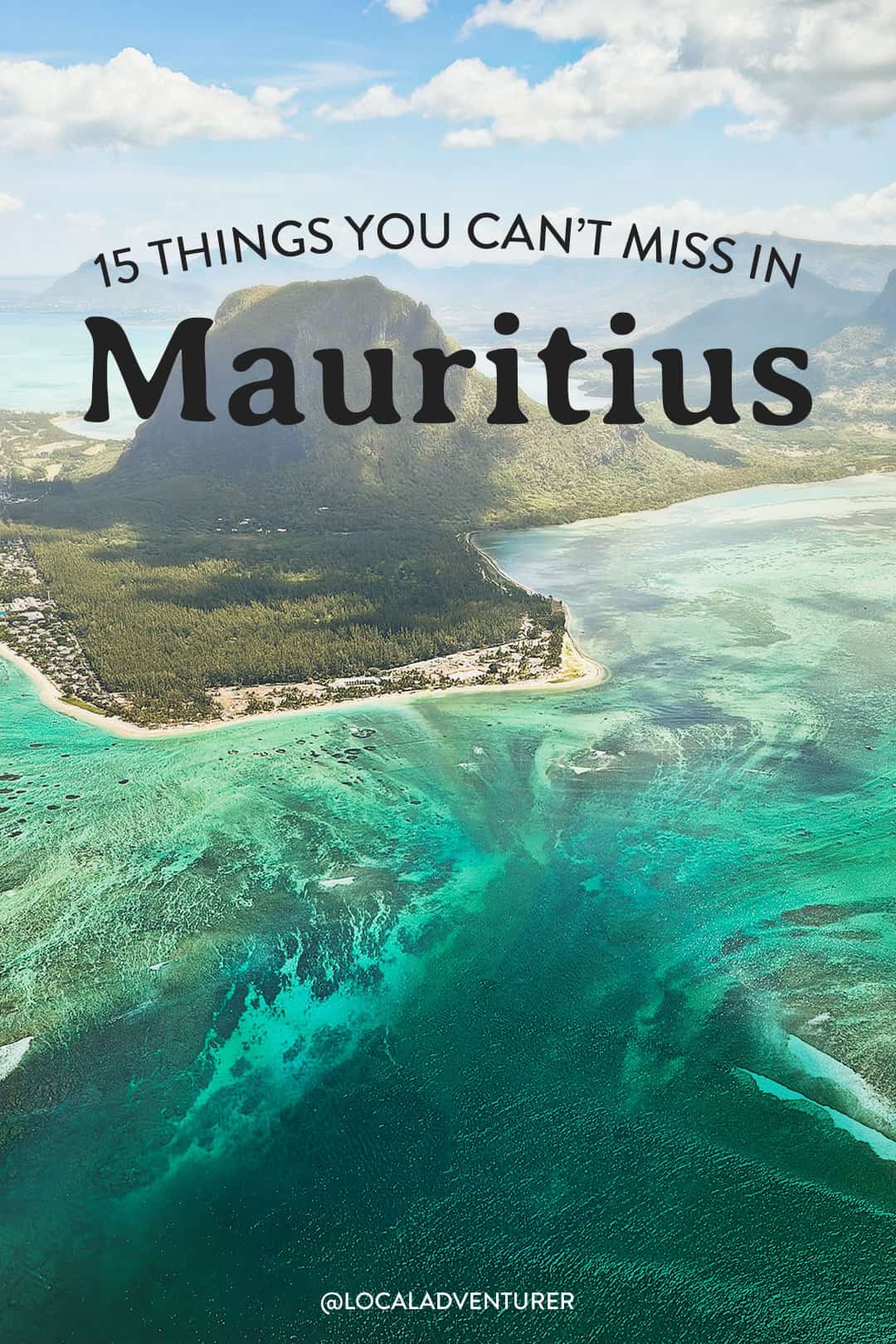
Thank you Mauritius Tourism Promotion Authority for hosting many of our excursions. All opinions are always our own. This post may contain affiliate links, where we receive a small commission on sales of the products that are linked at no additional cost to you. Read our full disclosure for more info. Thank you for supporting the brands that make Local Adventurer possible.
Last Updated: July 14, 2025
Where is Mauritius?
You’re way ahead of us if you already know where Mauritius is. We learned about the country as we started planning our trip. Mauritius is located off of the southeastern African coast in the Indian Ocean and is made up of 16 islands and islets. They have a main island (also called Mauritius) plus Rodrigues, Agalega, and St Brandon. Because of how far it is from the US, we noticed it was most popular among Europeans. France, UK, Germany, and Spain bring the most tourists. Followed by China.
Time Difference: It is +4 hours Greenwich Mean Time (12-hour difference from PST)
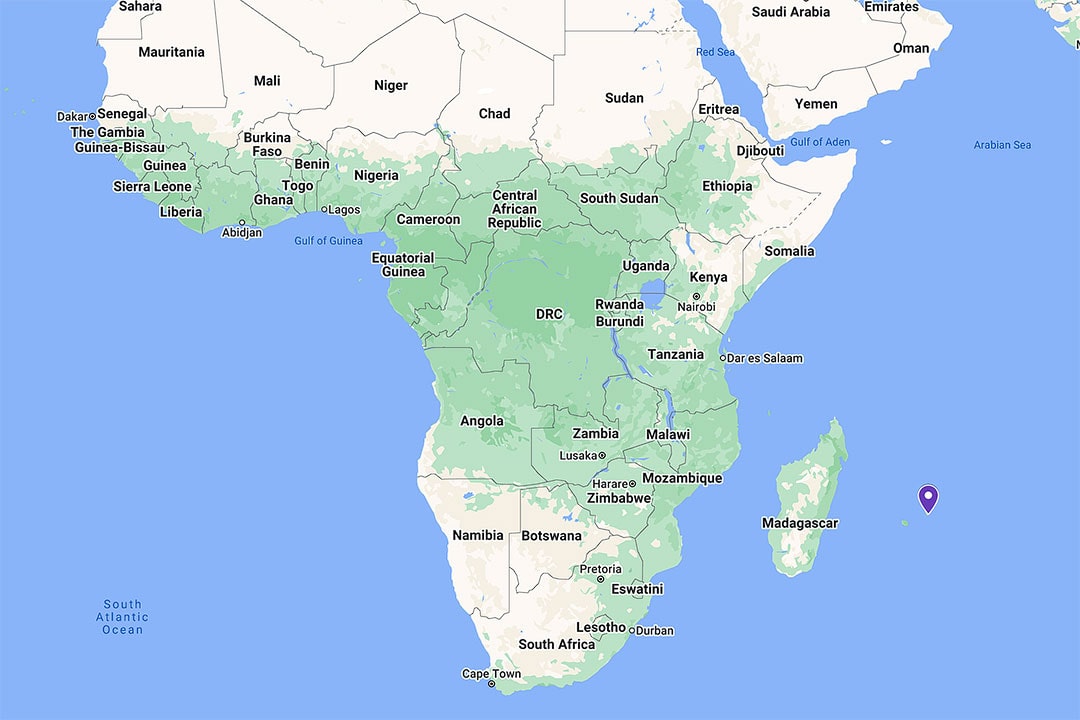
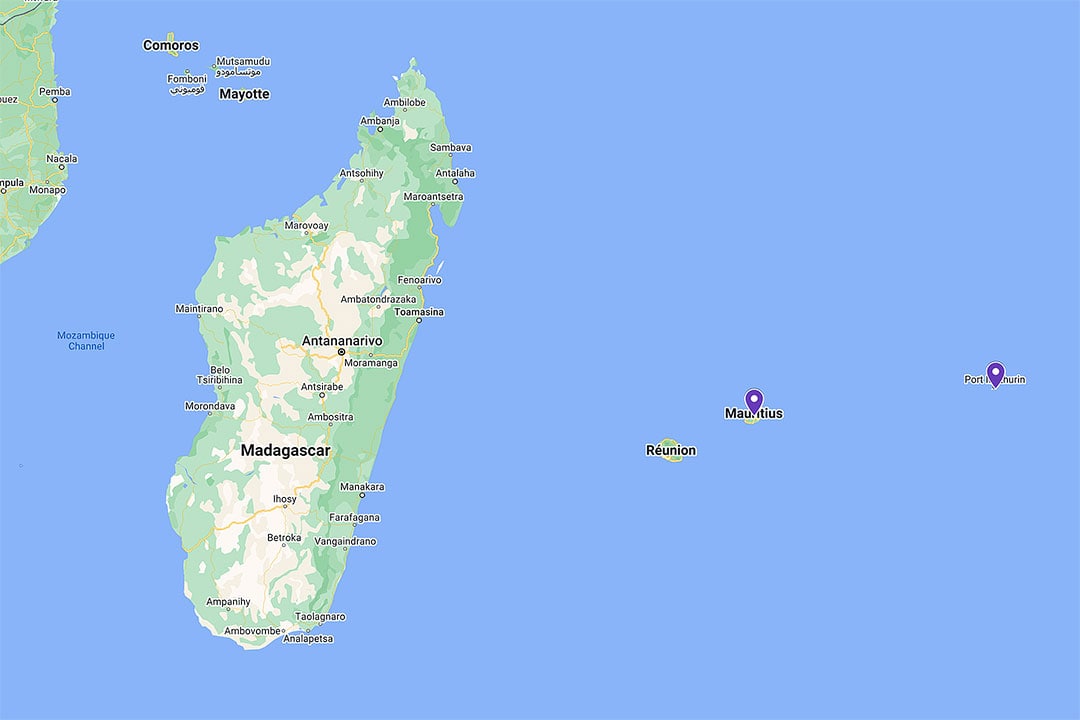
Why Visit Mauritius?
Most people spend their days on the beaches, turquoise lagoons, and snorkeling or diving the reefs. If you’ve had enough time on the water, you can venture inward to find rainforests, valleys, waterfalls, and colorful landscapes. If you’re a history buff, there are several museums and two UNESCO World Heritage Sites.
What is Mauritius Best Known for?
- Beaches – There are over 100 beaches along the coast. Most of the pristine ones in photos are private beaches for resorts and hotels.
- World Class Diving – around 50 dive sites across the island
- Wedding / Honeymoon Destination – has been awarded a top destination for both.
- As Known as Paradise Island – for its tropical climate, waterfalls, lush forests, mountain ranges, and water
- Big Game Fishing – great for marlin, tuna, and shark
- Dodo Bird – Did you know the now-extinct Dodo bird is from Mauritius? You’ll find them on souvenirs and branding all over the island.
- Golf – Golfing is very popular in Mauritius. There are ten 18-hole courses and four 9-hole courses, some designed by Gary Player and Ernie Els. Mauritius was home to the first golf course in the southern hemisphere.
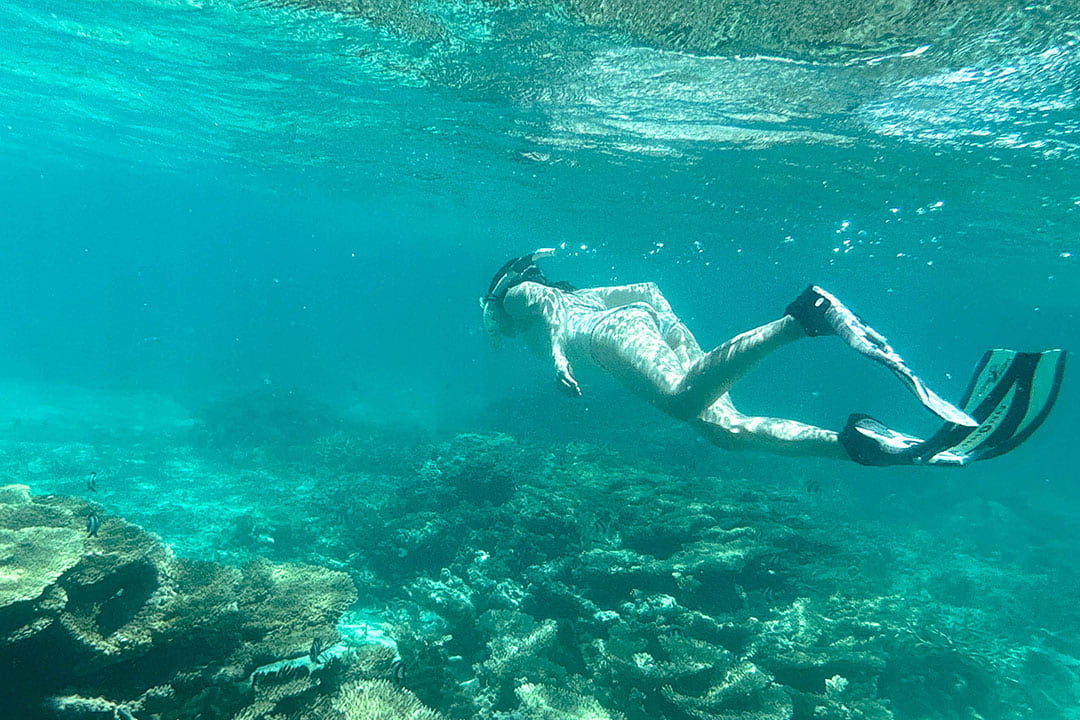
What You Need to Know Before You Go
- Seasons: Summers are October-April, and Winter is from May-September. Shoulder season runs March-April and September-October. Temperatures are warm year-round, making it a year-round destination.
- Cash: We only needed cash for tips and street vendors. Other spots took credit cards. You can exchange currencies at the airport and most hotels or withdraw from an ATM. If you withdraw from an ATM, we heard you should limit each transaction to MUR15,000. Otherwise, the machines might get jammed.
- Peak Season Bookings: During peak season, you should book hotels three months in advance and activities/restaurants around one week before.
- Hours: A lot of places close earlier than we expected. Also, certain restaurants will have random days they aren’t open. Also, remember that many businesses will close for specific holidays, and many spots close on Sundays.
See More: 17 Things You Must Know Before Visiting Mauritius Travel Tips
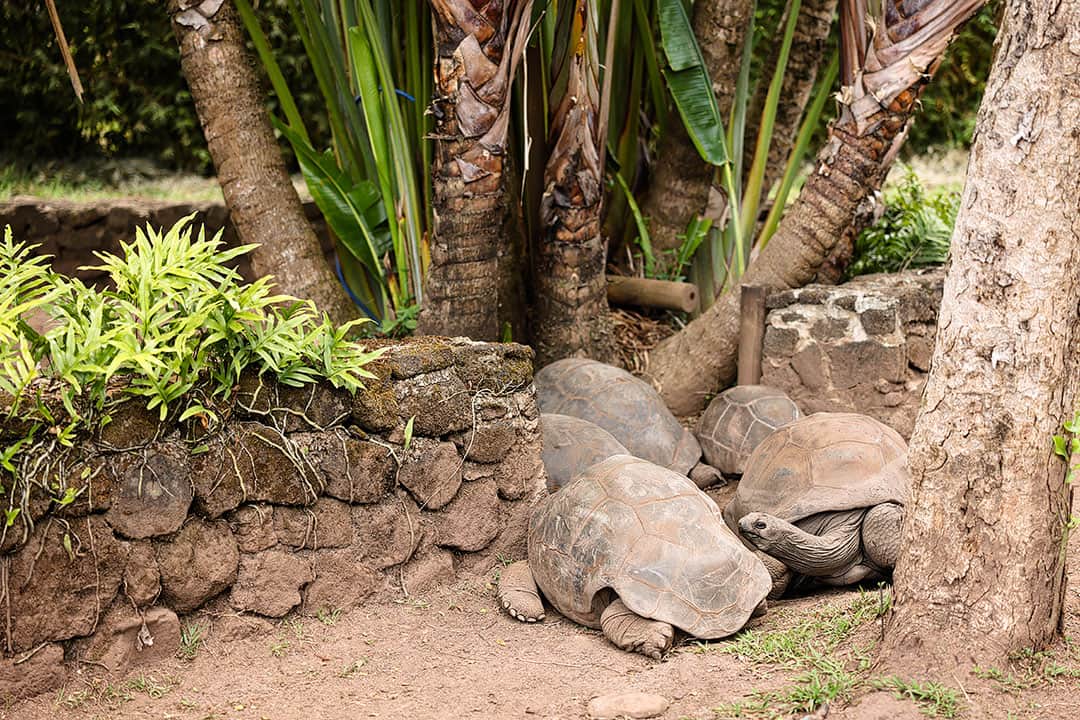
15 Best Things to Do in Mauritius
1. Chamarel Waterfall
20.4432218,57.3835847, map
Fees: MUR500 (includes 7 Colored Earth)
The Chamarel Waterfall is the tallest single-drop waterfall in Mauritius at roughly 100 meters or 328 feet high. You can see the waterfall from two viewpoints, one right at the parking lot and another up a set of stairs.
If you’re looking for something even more adventurous, you can abseil down the sheer cliff. Or there is also a hike that lets you explore the valley and the foot of the falls, where you can jump in the water.
Local Tip: If you visit mid to late winter or early summer, the waterfall will be small and look like multiple streams. It flows at its full force around May.
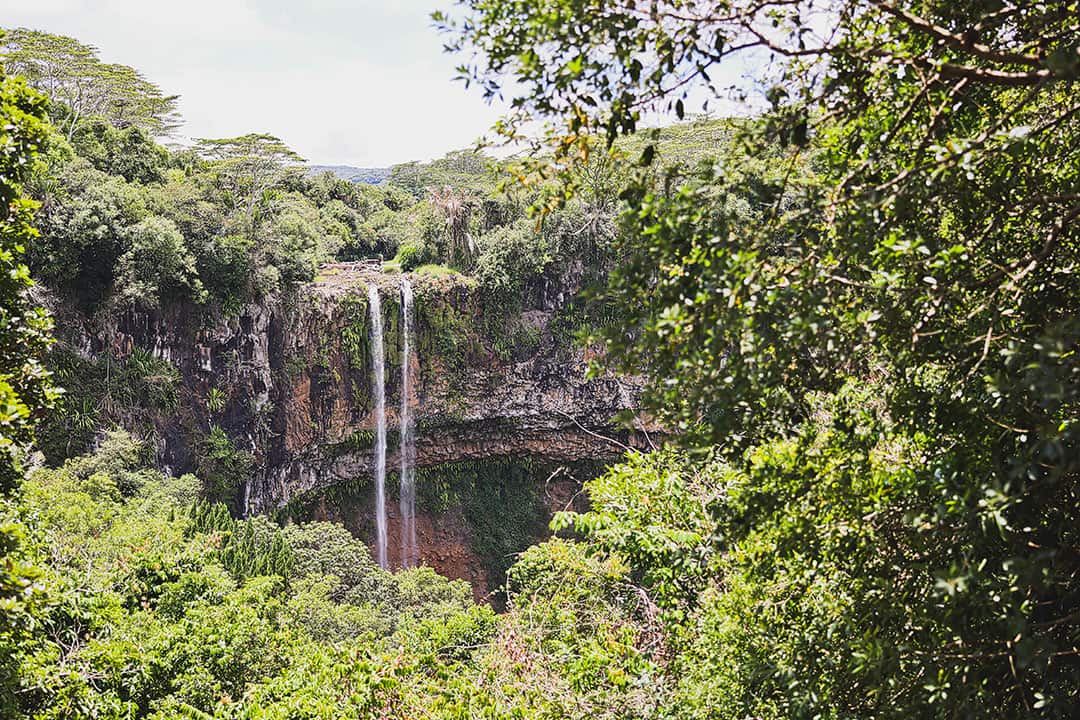
2. Chamarel 7 Colored Earth
7 Colored Earth Road, Chamarel, Mauritius, map
Fees: MUR500 (includes Chamarel Waterfall)
The Seven Colored Earth at Chamarel is one of the most popular landmarks in Mauritius that reminded us of the Painted Hills in Oregon. A fence protects the perimeter of this geological formation, and you can see hints of red, brown, violet, green, blue, purple, and yellow. You can walk around the path to get different vantage points or enjoy a drink and snack at the cafe with seats overlooking it.
People crop their photos, so it’s hard to see the scale, but the area was way smaller than we expected.
Local Tip: There is a small enclosure where you can see Aldabra Tortoises, the second largest species in the world.
See More: The Ultimate Guide to the Painted Hills Oregon
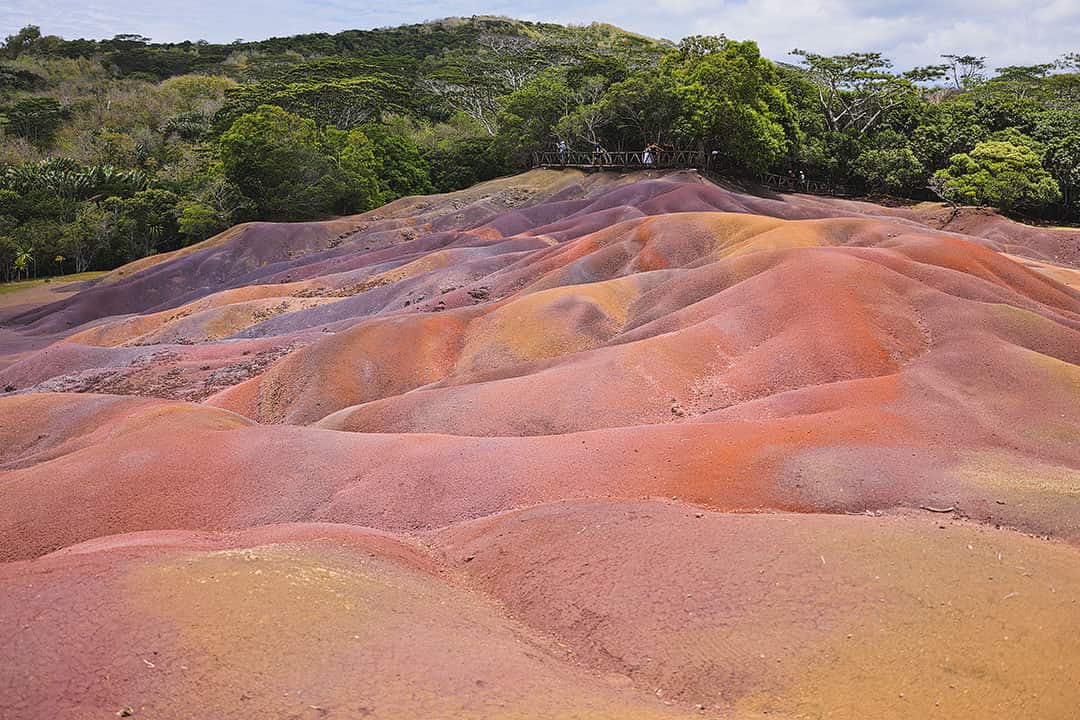
3. Helicopter Tour Over an Underwater Waterfall
-20.4735767,57.3125575, map
Fees: MUR40,000 for 4 from Avalon + MUR2,000 Landing Fee
Have you seen an underwater waterfall? Okay, this one is an optical illusion but is still beautiful nonetheless. You can only see it by helicopter at a specific angle. We did a 30-minute helicopter tour, which gave us time to make a few passes at the Underwater Waterfall. Then we got an aerial view of the 7 Colored Earth, Black River Gorge National Park, and Grand Bassin.
The chopper also had windows we could open to shoot photos without glare! Plus, they did a great job keeping all the windows clean and clear.
Booking the tour, however, was confusing. There are only a handful of helipads on the island, and you can only use them if you’re a guest of the specific hotel with the helipad. We had to contact Avalon Golf Estates separately to get permission to fly out of there and then pay a MUR2000 fee. This was also not very straightforward.
If you’re looking to book a helicopter tour, just contact Air Mauritius via email immediately. Tell them what you’re interested in doing and where you’re staying. Then have them help you figure out the details. Don’t be afraid to ask them questions or ask for help if you need it. It was the most frustrating excursion to plan, but the views were worth it.
Photo Tip: If you want serious filming, you can request a doors-off helicopter tour. It costs more and requires other approvals through the government, but they can walk you through those details too.

4. Boat Tour for Fishing, dolphin Viewing, or swimming with Wild Dolphins
-20.3271122,57.3748595, map
Fee: MUR15,000-18,000 for a Private Tour with Lunch
Contact: Jean Michel +230 5 491 2028
Our local guide was Jean Michel. Whenever possible, we like to support local vs. foreign tour companies. Jean Michel is from Tamarin, a fishing village, and comes from at least three generations of fishermen. He knew the area well. His son also came along to help. They can take you fishing or dolphin watching, and it’s up to you if you want to snorkel.
Dolphin pods of 20+ frequent Tamarin, where they rest and sleep before going to the deep sea to hunt for food. There are two different types of dolphins here. Bottlenose dolphins are the most common and are 6-13 feet long. Spinner Dolphins are rarer and are 4-8 feet long.
The experience felt similar to a safari. All the other boats and kayakers followed the pod around, and their guests jumped in after them. Jean Michel was great because he read where the pods were heading and dropped us off further ahead of them so we could watch them pass us (though they were swimming away from the other boats)
Swimming with wild dolphins was not as ethical as we had hoped. Our guide was better about giving them space, but there were many moments we felt uneasy watching all the boats circle the pod closely. There may be an ethical way to watch and swim with dolphins (from a distance of 50 yds with no guarantee that they will swim near you), but it gets dicey whenever humans and money get involved. We’re not here to tell you what to do but to give you enough info to make your own decisions.
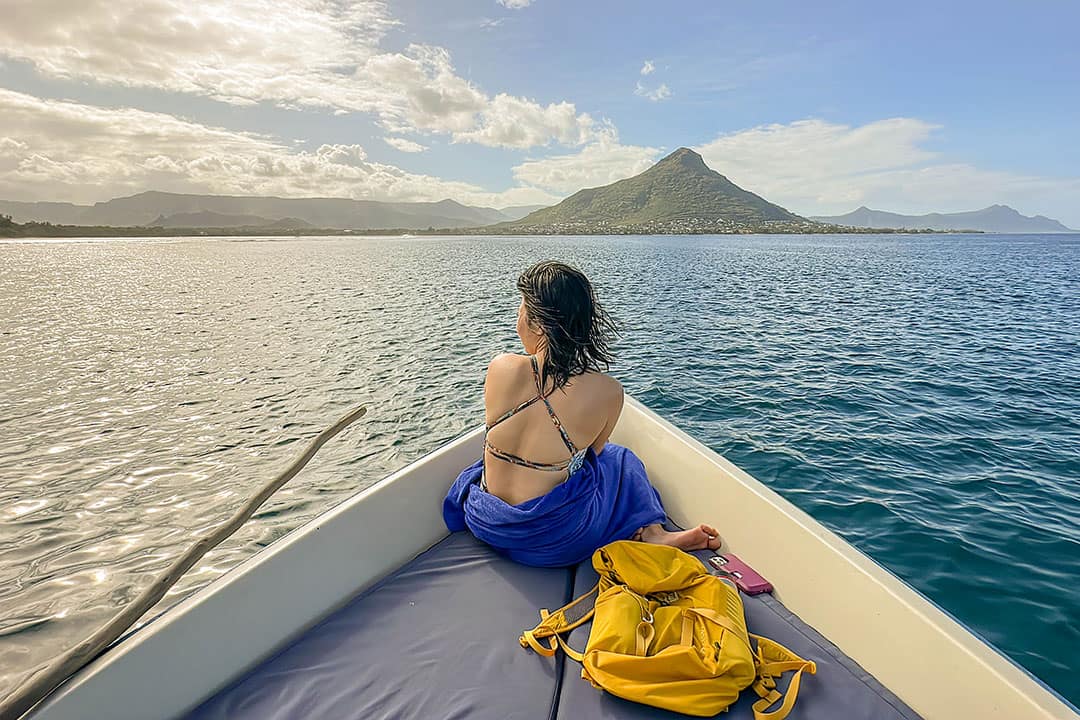
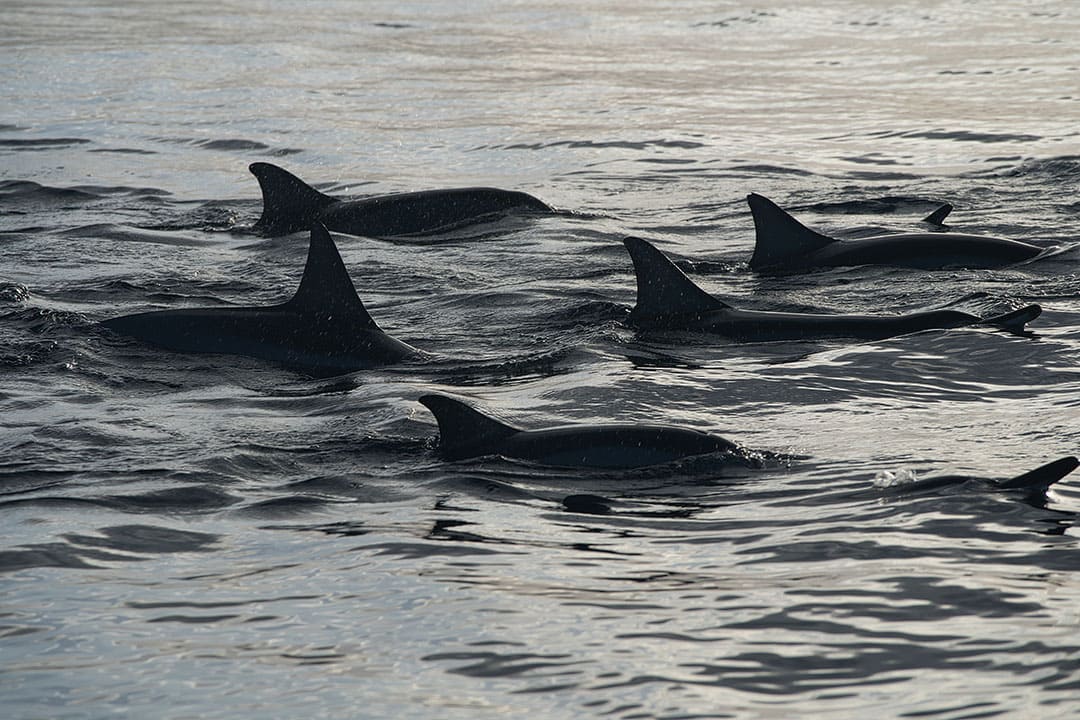
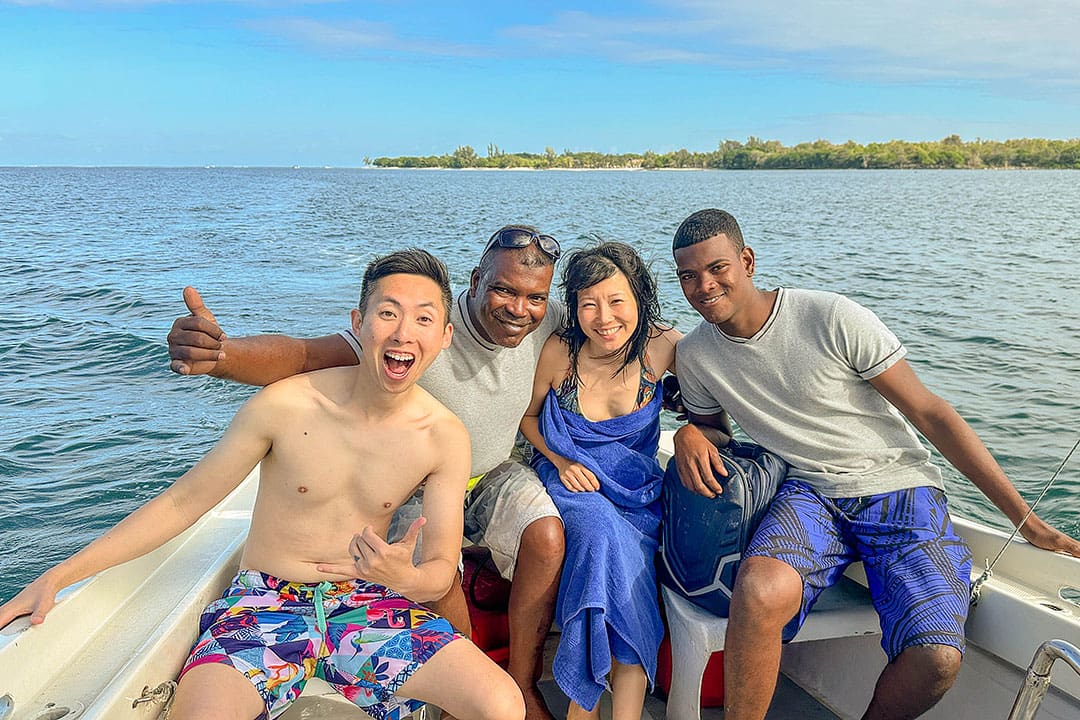
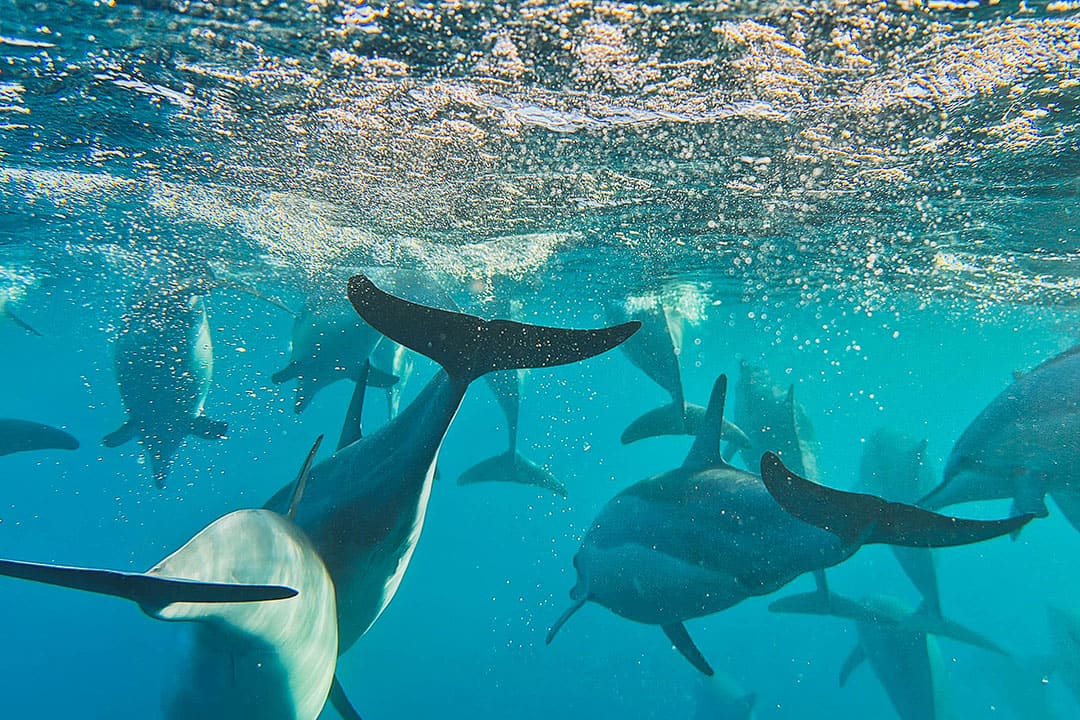
5. Aapravasi Ghat – UNESCO World Heritage Site
Ex-DWC Building, 1 Quay St, Port Louis, Mauritius, map
Fee: Free
The Aapravasi Ghat World Heritage Site is the remains of an Immigration Depot built in 1849. It is where the British tested out indentured labor and spread it to the rest of the world due to their success. The site has a museum you can walk through with tons of info and historical pieces. You can also walk the first steps indentured laborers had to walk when they arrived on shore.
Local Tip: Near the end of the museum, where there is a model scale of the original Immigration Depot, check out the touch screens. It will show present-day Aapravasi Ghat and allow you to overlay what the historical site looked like.

6. Snorkel or Dive at Blue Bay Marine Park
-20.4448478,57.707607, map
Since the island is known for its coral which surrounds the majority of its coast, we decided to go on a snorkeling outing. Overall, it was just okay snorkeling. There was a lot of wildlife and fish swimming around, but most of the coral we saw was already bleached.
From our research, you must dive to see the beautiful coral. We booked our trip through GetYourGuide. The guide and service were great, but they did not mention that we needed to bring our own gear. We had our own gear, but Kim and Rob did not. Our guides were kind enough to find us some masks from another boat but not fins.
Pro Tip: We both have AquaLung Snorkel Masks and Fins and love them. We always bring a mask to ensure it fits and doesn’t leak. The fins come with us if we have space. Another couple had full-face snorkel masks that I wanted to try. Also, don’t forget reef-safe sunscreen and a rash guard to protect you from the sun.
Photo Tip: Don’t forget to bring a waterproof case for your phone or camera. If you don’t want to snorkel, you can stick the camera in the water from the boat.
See More: How to Pack for a Snorkeling Trip
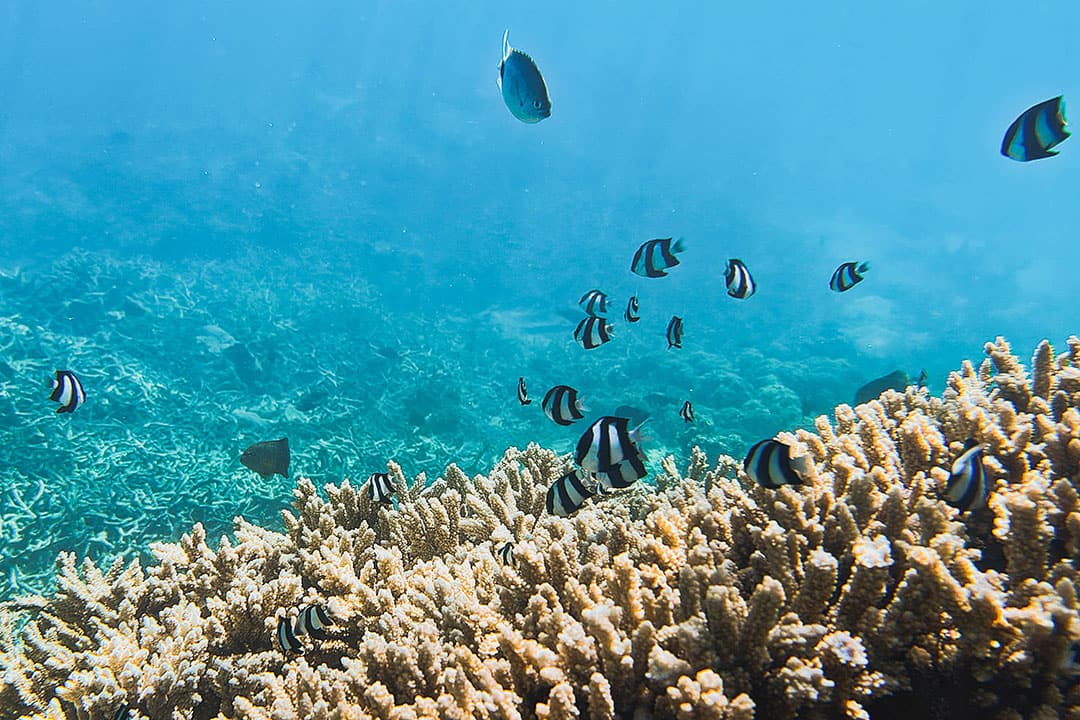
7. L’Aventure de Sucre / Sugar World
B18 Pamplemousses MU, Pamplemousses 21001, Mauritius, map
Fee: MUR575
Chances are that most of the fields you see in Mauritius are full of sugar cane. Sugarcane farms dominate 70% of the land on the island. Although only three main companies handle all of it now, there is a ton of history in how sugarcane plantations shaped Mauritius.
The museum goes into Mauritius’s history and sugarcane’s role in it. We went through it quickly, but you should allot between 45 to 120 minutes, depending on how much you read. They also have an app that helps you navigate the museum.
At the end of the museum, you can taste sugar and rum. Edible souvenirs are our favorite, so we picked up a few bags of sugar for our friends. They don’t add any flavor, but it was so fascinating how different each sugar tasted depending on their process.
They also have a restaurant where we had our first meal after landing. The meal was one of our favorites from the entire week, made with fresh ingredients and beautifully presented.
Local Tip: They have cane cutting experience on Wednesdays at 10:30 AM for MUR600, where you learn how to cut the cane and make delicious cocktails with its juice.

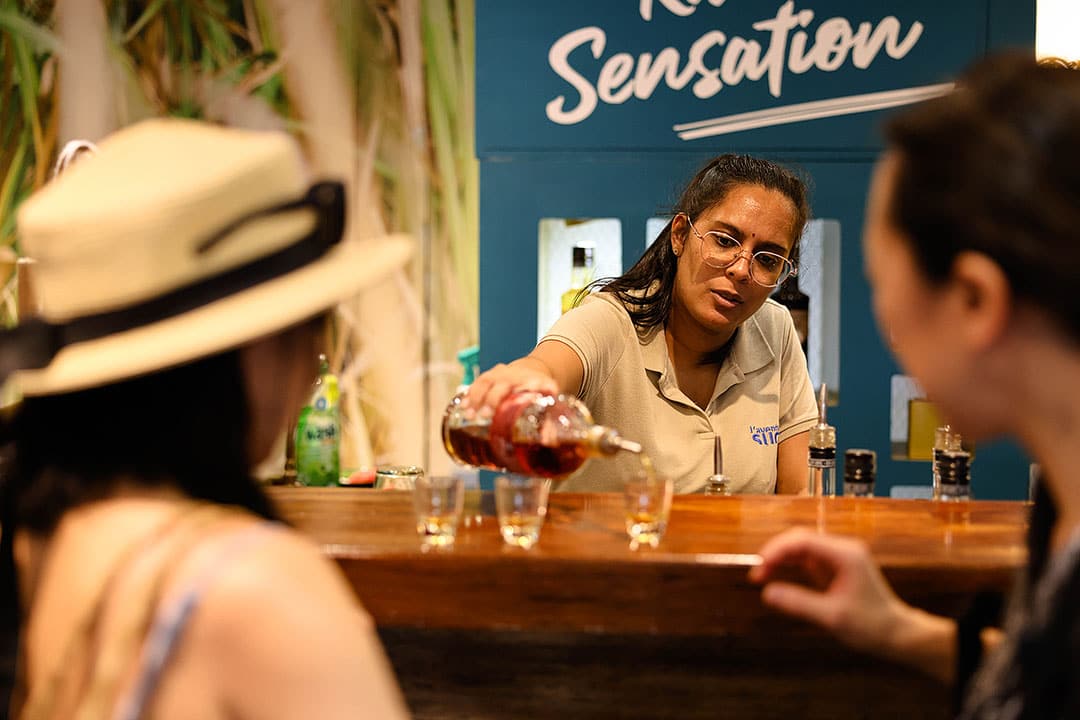
8. Bois Cheri Tea Factory Tour
-20.4263291,57.5234646, map
Fees: MUR525 for the Tour, MUR2400 includes Lunch
Bois Cheri is the largest tea producer in Mauritius, and the plantation dates back to 1892. The tour takes you through how tea is made, from the 50-60 kilos of tea each person picks a day to the bagging portion of the dried leaves. We loved smelling all the aromas of the factory.
Plus, we had the pleasure of being shown around by Azaad, who has been working at the factory since he was 14. He began by packing vanilla tea by hand, then later came up with the idea for the guided tour, which has been running for 25 years. He is retired now but still comes back to the factory from time to time.
Afterward, you can head to their restaurant and tea lounge, where you can do a tea tasting or grab a bite to eat. You may even spot some boars and chickens roaming the property.
Local Tip: The restaurant and factory are a short distance away from each other. It’s walkable, but ideally, you take your car over. If you have a driver, be sure they know to be ready for you after the tour.

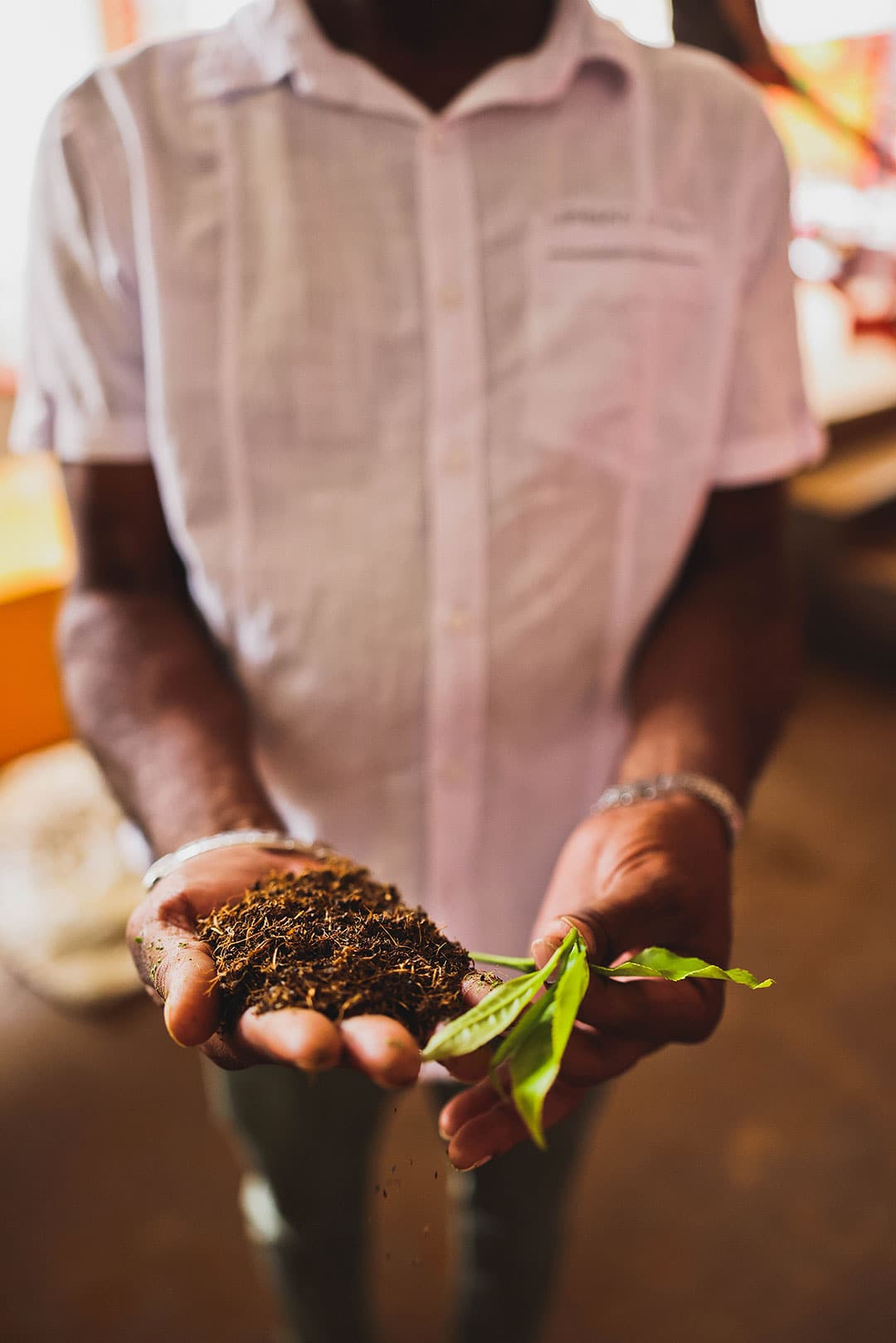
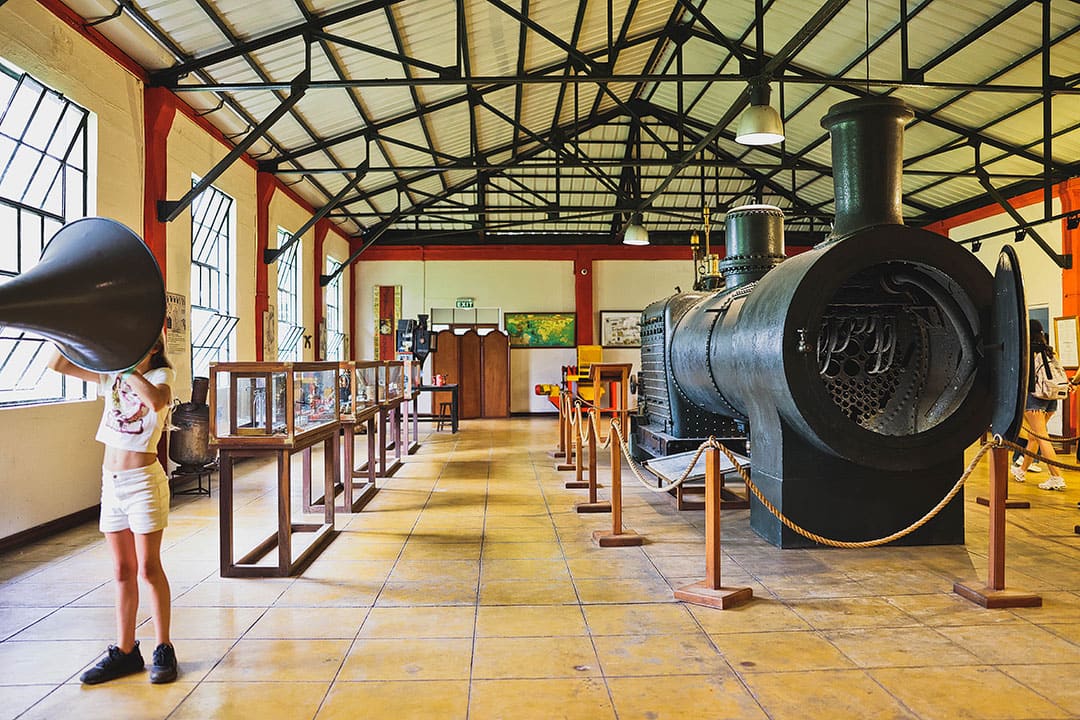
9. Black River Gorge National Park
B103 – Plaine Champagne Road, Mauritius, map
Fees: Free (Open 6 AM to 6 PM)
Black River Gorges National Park comprises humid forests, drier lowlands, and marshy heathland. There are 60km of trails to explore and a few different viewpoints:
- Alexandra Falls Viewpoint – see the cloud forest of Mt Cocotte and Alexandra Falls (best after monsoon season)
- Gorges Viewpoint (photo below) – one of the best views on the island (you can often find monkeys in this area)
- Macchabée Viewpoint – great views where some of the most popular trails meet
Local Tip: If you visit early morning, the park is empty! We arrived around 7:45 AM and had the whole place to ourselves.
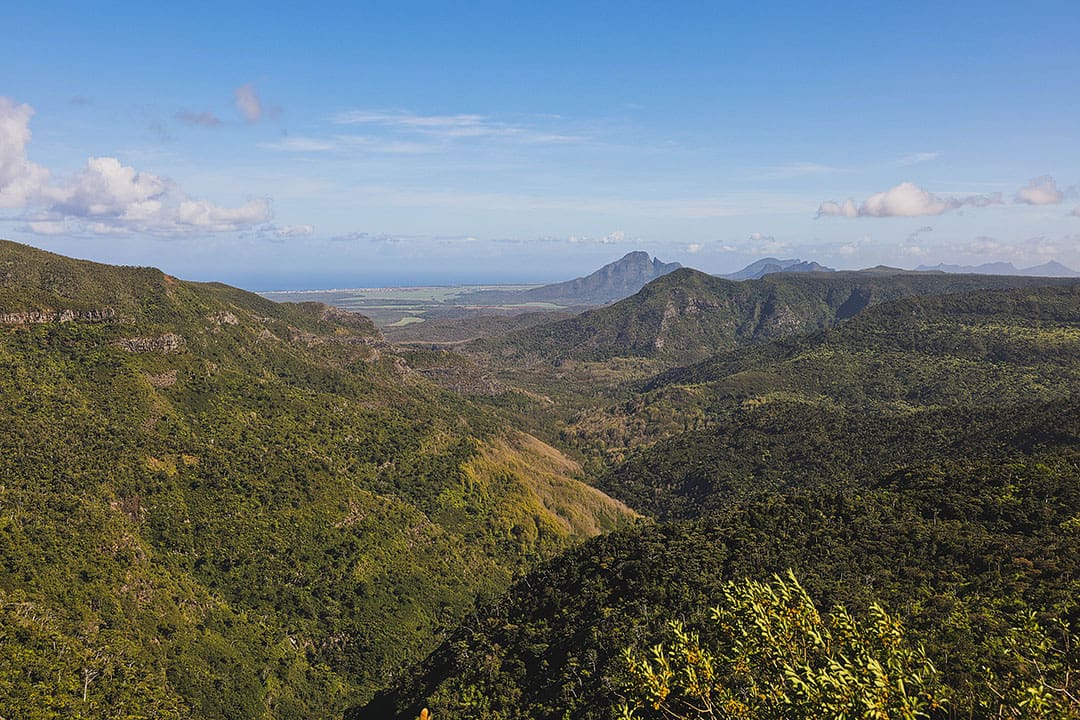
10. Le Morne Brabant Hike
-20.4600496,57.3250094, map
Fee: Free unless you hire a guide
We typically hike on our travels, but on this trip, we decided to focus more on water activities and ended up seeing Le Morne Brabant from the helicopter.
The hike up Le Morne Brabant is one of the most popular on the island but isn’t easy. The hike is roughly 4.4 miles / 7 km long, but you will also be hiking from sea level to 1640 feet / 500 m, and most of this elevation change happens in the second half of the hike. On average, the hike takes 3-4 hours.
They used to require a guide, but we’ve read accounts of people doing it on their own. Make sure you are confident in your hiking ability, as portions are exposed and require scrambling. Hiring a guide makes the most sense if you have any reservations about your abilities.
Le Morne Brabant is the second UNESCO Heritage Site on Mauritius and is a symbol of freedom and hope and a reminder of the world’s darkest practices. Runaway slaves used Le Morne Brabant as a hideaway to escape their masters. According to a legend, when slavery was abolished in 1835, policemen were sent to Le Morne Brabant to break the news. Unfortunately, the slaves assumed they were getting arrested, so they climbed to the top of the mountain and jumped to their deaths.
Local Tip: Weather can change quickly at any point in the hike. If it starts raining, don’t panic. Stay put and hunker down. Most storms will pass through, and it will be sunny again.
See More: 25 Best Hikes in the World to Put on Your Bucket List
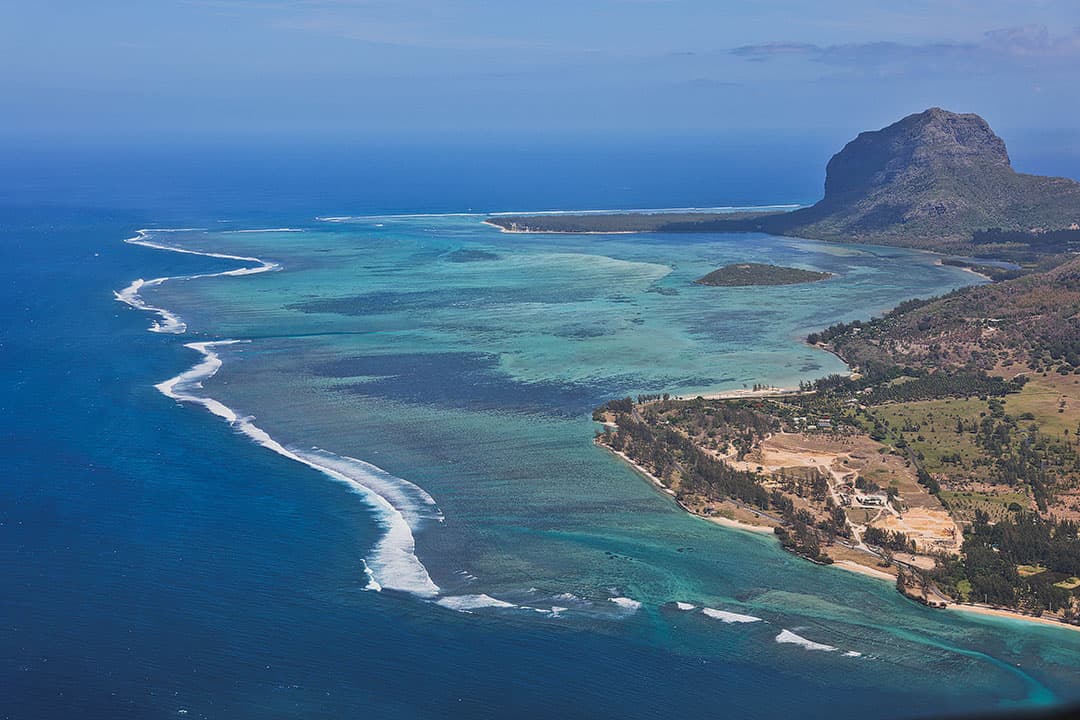
11. Central Market, Port Louis
9 Corderie St, Port Louis, Mauritius, map
The Central Market, aka the Bazaar of Port Louis, is a good spot to pick up fresh produce, local eats, and gifts. They have clothes, spices, handmade crafts, and more. The market is divided into different sections and is relatively easy to navigate.
Local Tip: Have cash ready for the market and smaller bills, so it’s easier to have exact change. Also, eat at Wapalapam, within walking distance from Central Market.
See More: 25 Best Markets in the World to Put On Your Bucket List
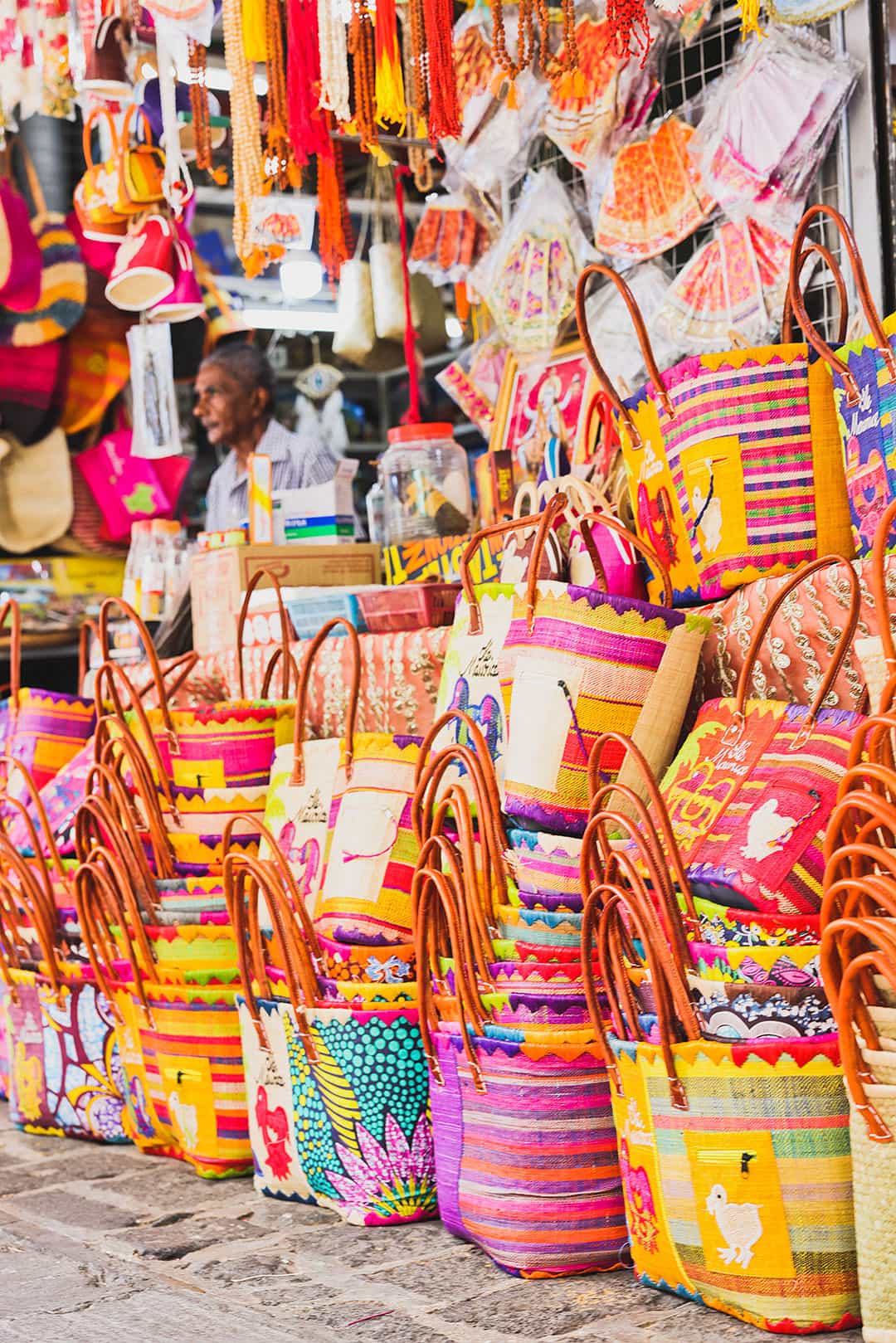
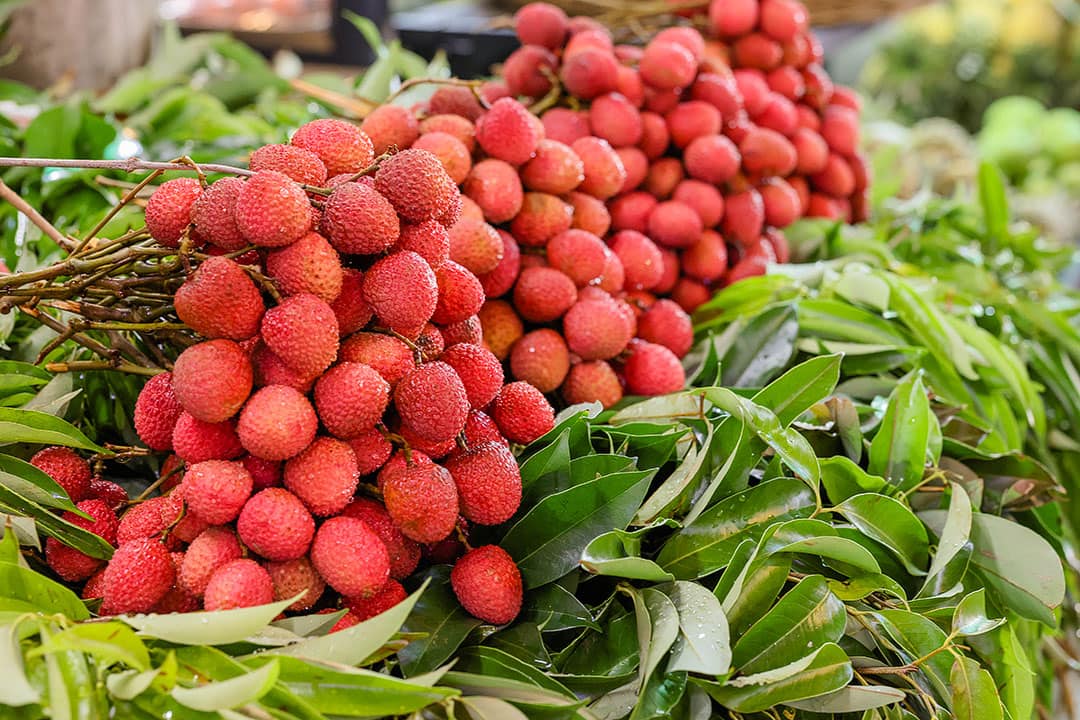
12. Le Caudan Waterfront, Port Louis
-20.160863,57.495895, map
Le Caudan Waterfront is a waterfront shopping district with a bit of everything. We made a brief stop to look at it, but you can find a movie theater, many shops, plenty of food options, Caudan Arts Centre, and the Blue Penny Museum. If you’re looking for art, check out the Artists Corner, where you’ll find pieces on display and see artists at work. There’s even a casino if you want to try your luck.
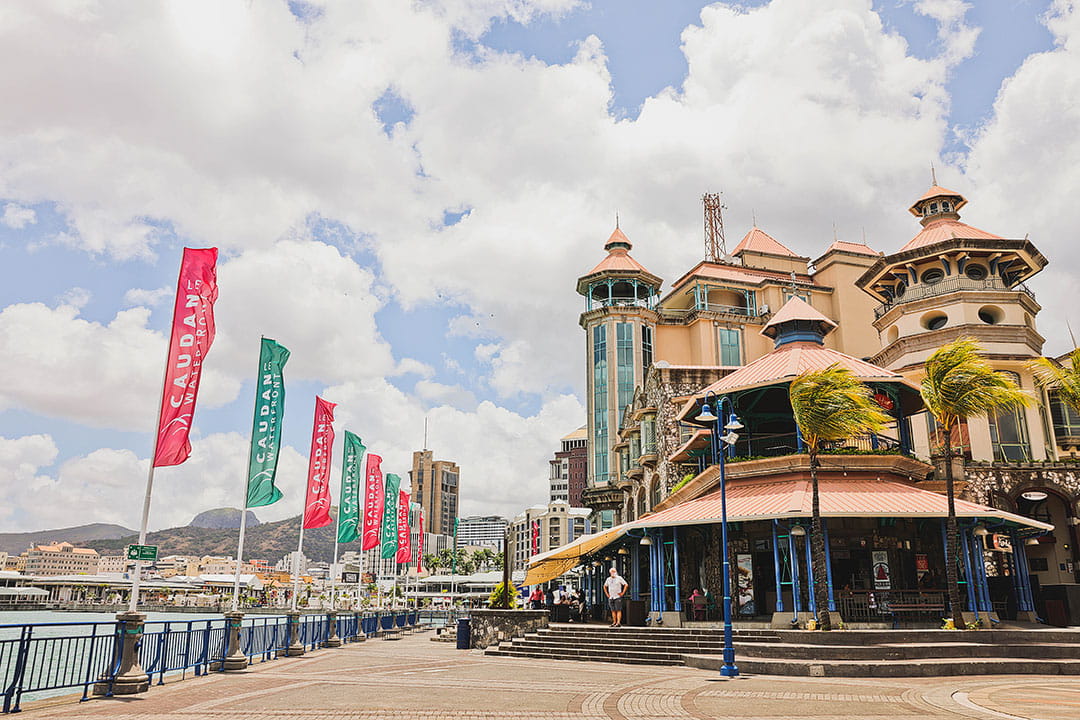
13. Grand Bassin / Ganga Talao
-20.4183851,57.4899907, map
Fee: Free (Donations Accepted)
Grand Bassin, or Ganga Talao, is a popular pilgrimage because it is the largest outside India. Thousands of people visit the site annually in late January/early February. In 1972, a priest from India brought sacred water from the Ganges and poured the holy water into the lake.
When visiting, it’s hard to miss the massive statues, including the Grand Bassin Shiva statue that stands 108 ft tall. It’s the third-highest Shiva in the world. There are multiple areas to explore, and our driver told us monkeys frequent the temple on top of the hill.
Note: Please also pay attention to the signage and take your shoes off when entering the Lake complex and temples. The lake is considered sacred, so do not feed the fish and eel.
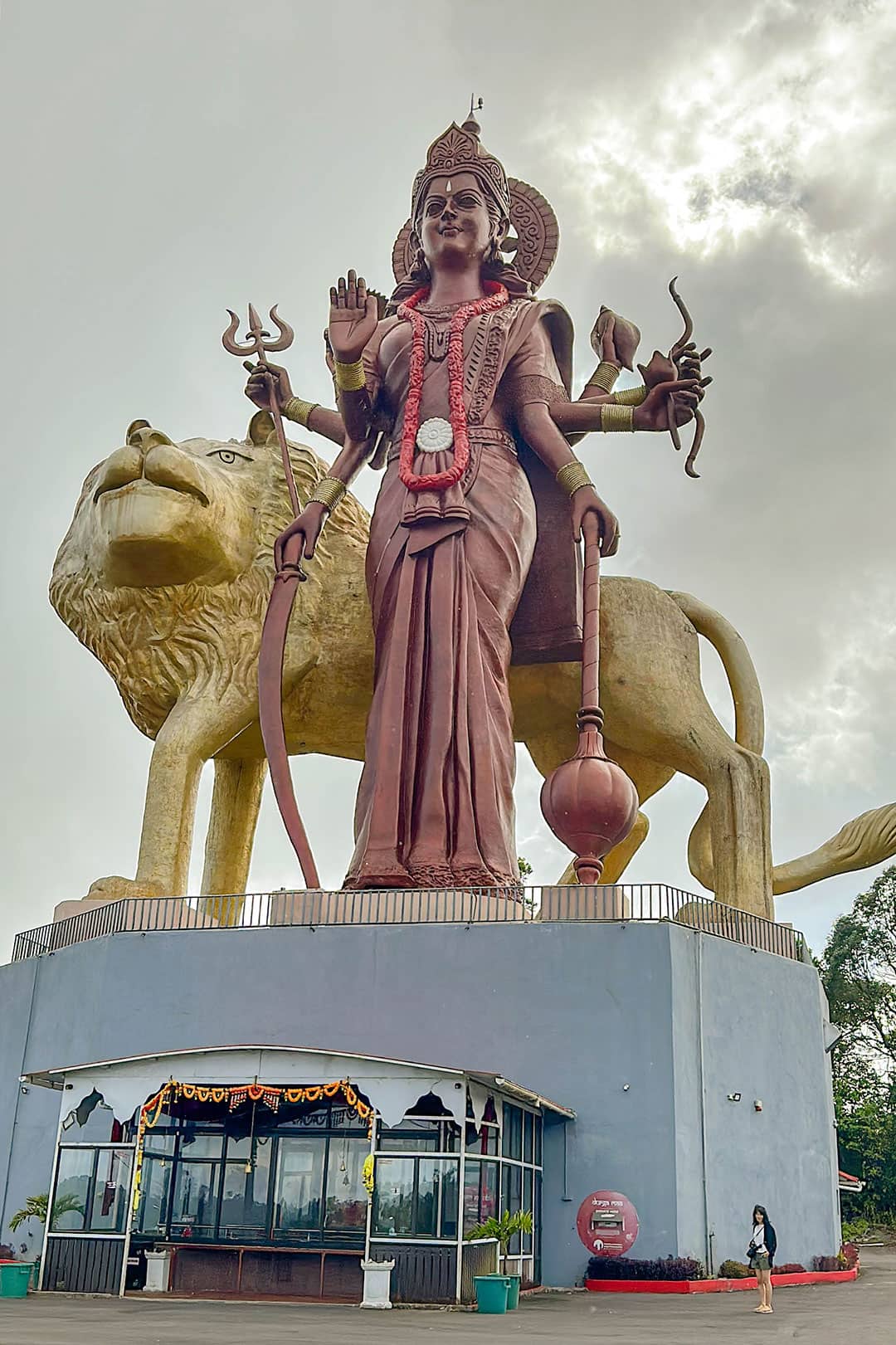
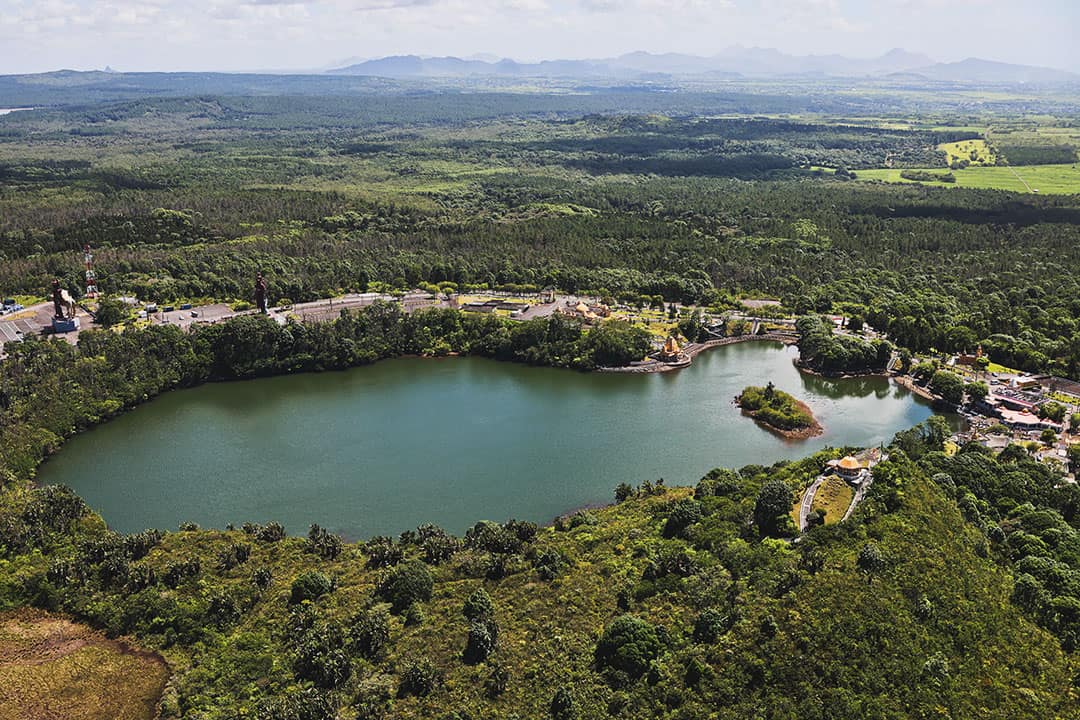
14. Citadelle / Fort Adelaide
-20.1637138,57.4933898, map
Fee: Free
We stopped by the Citadelle or Fort Adelaide to get panoramic views of Port Louis.
The fortress began construction in 1930 but wasn’t completed for another ten years. It was initially built to fortify the defense of Port Louis but was never used for that reason.
Local Tip: You can see Champ de Mars Racecourse from the Citadelle, the oldest horse-racing club in the Southern Hemisphere and the second oldest in the world.
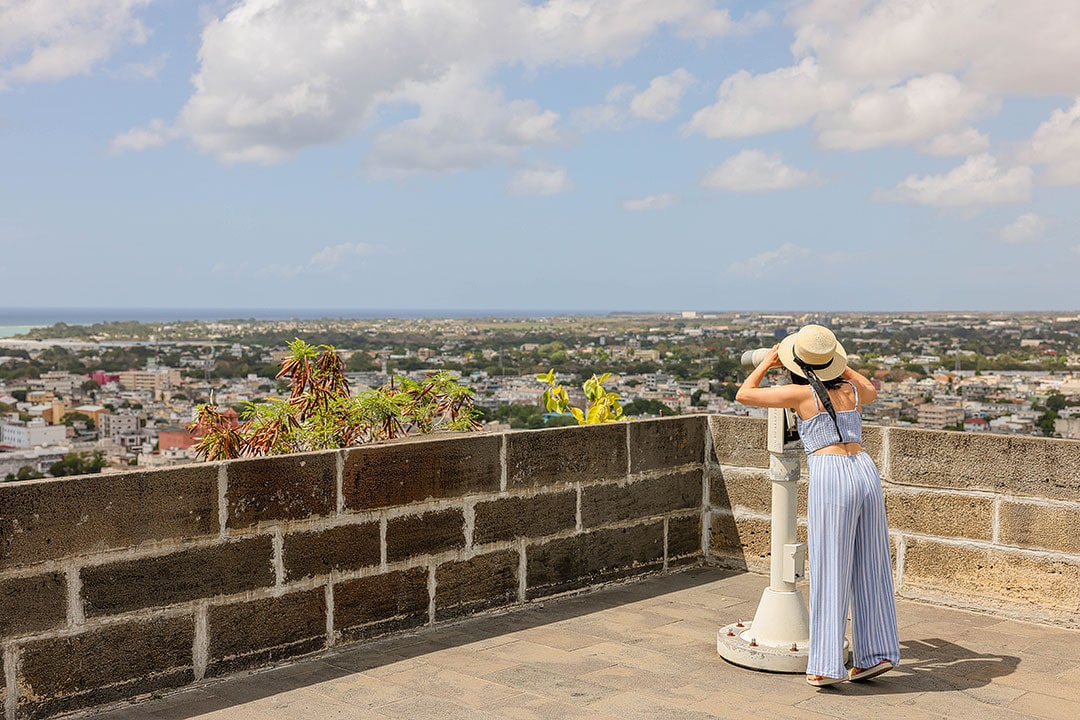
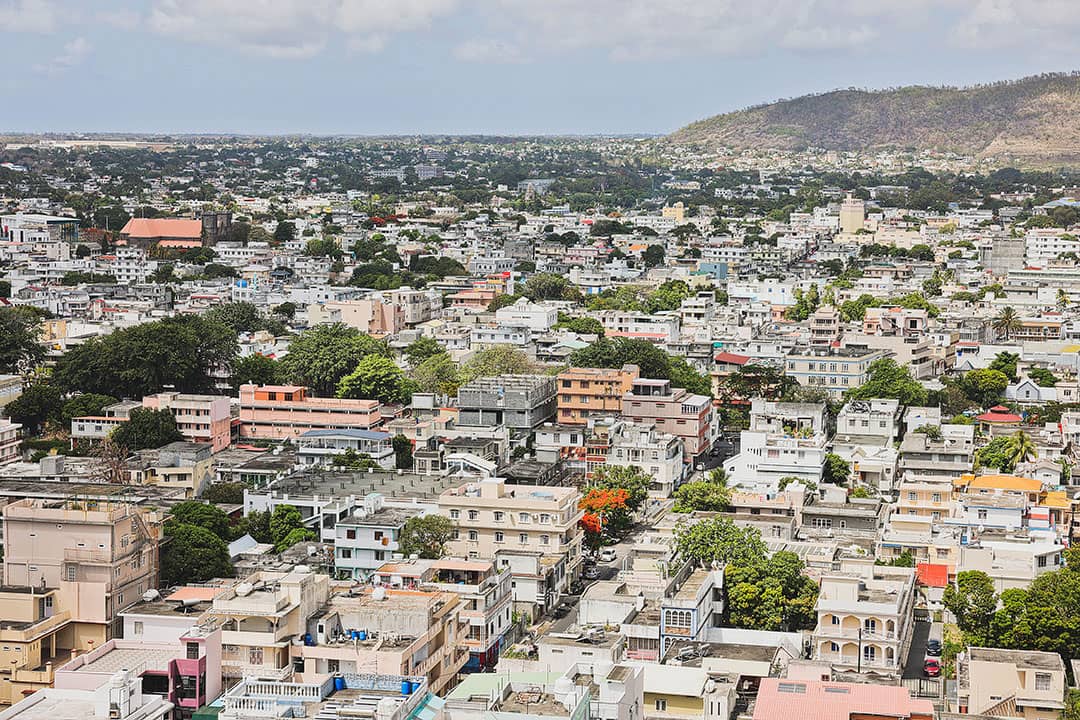
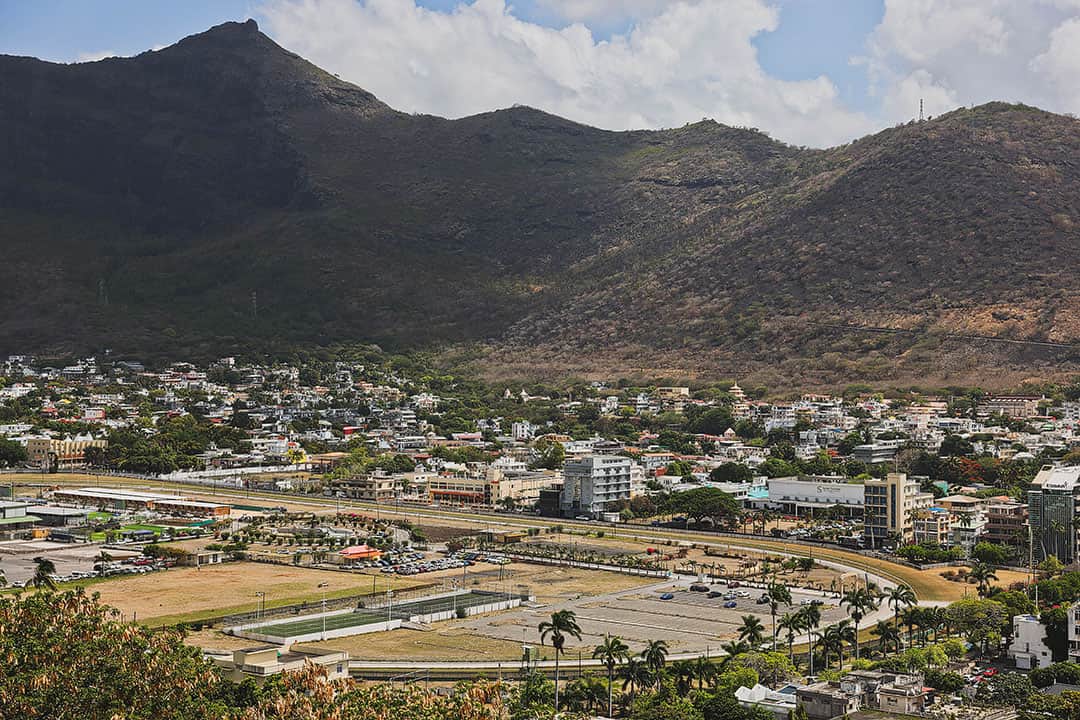

15. Maheswarnath Mandir aka Tiolet Shivala Hindu Temple in Triolet Village
-20.0425168,57.5501786, map
Fee: Free (Donations Accepted)
Maheswarnath Mandir, known locally as Grand Shivala Triolet, is a Hindu temple known for its association with the first pilgrimage to Ganga Talao. It is the biggest and one of the old temples on the island, founded in 1888. The skinny cat there was very sweet!
Local Tip: Please also pay attention to the signage and take your shoes off when entering the temples.
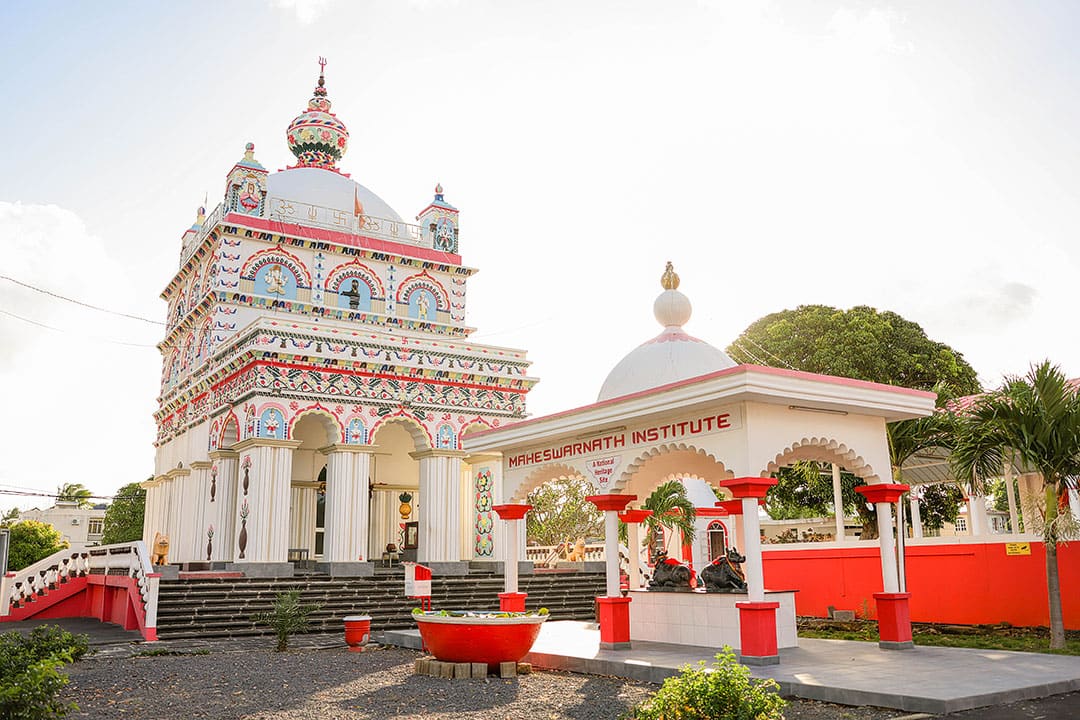
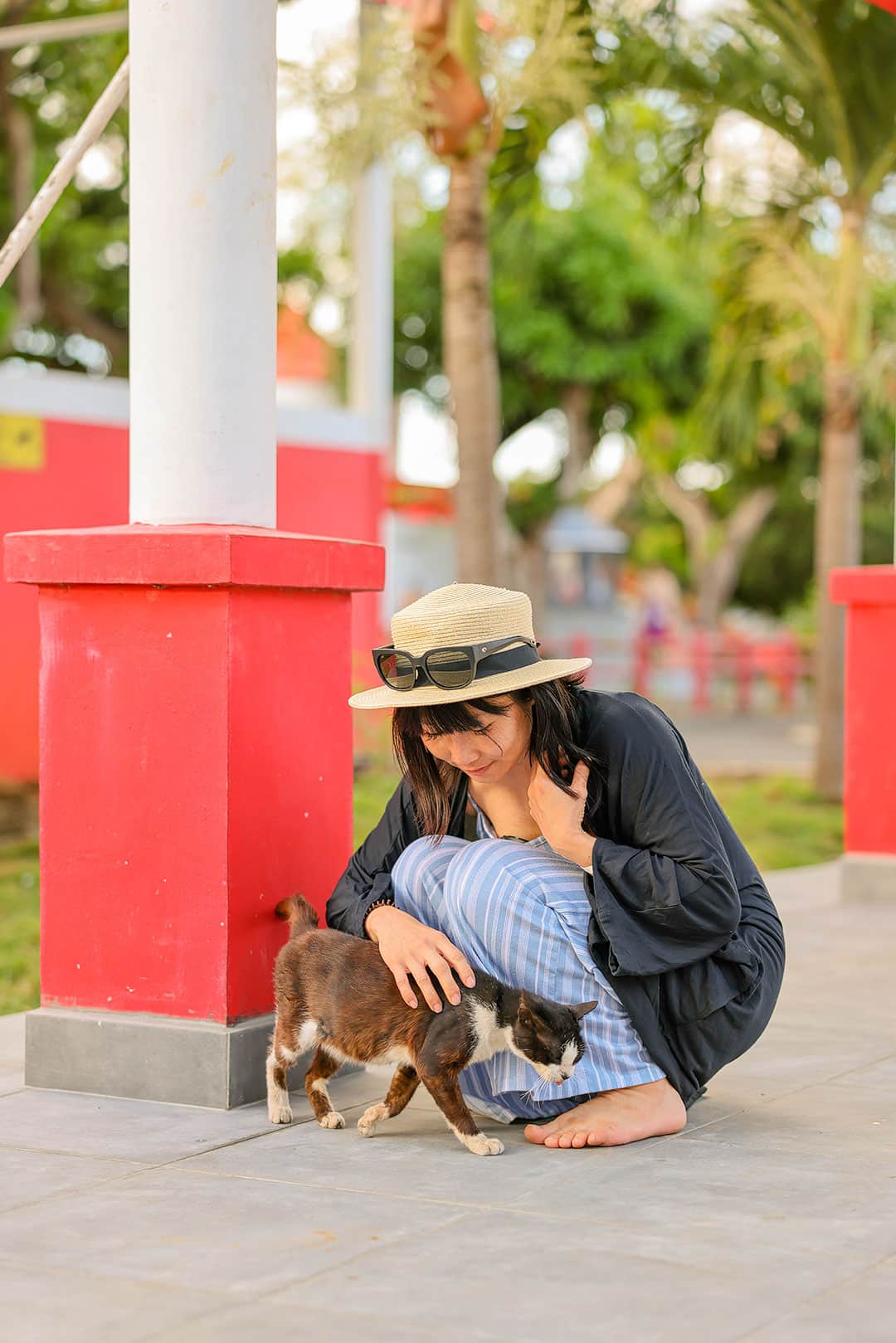
More Things to Do in Mauritius
- Albion Caves Sea Kayaking – We were interested in this but weren’t confident in our kayaking skills. They note that it is only for advanced kayakers.
- Casela Nature Park – We initially wanted to visit the giant tortoises but ended up seeing them at 7 Colored Earth. From photos on social, Casela looks more like a zoo than a safari.
- Champ de Mars Racecourse – Oldest horse-racing club in the Southern Hemisphere.
- Ile Aux Cerfs Boat Trip – A more private and wilder island with water activities. We didn’t bother since our resort included a ton of water activities.
- Sir Seewoosagur Ramgoolam Botanical Gardens – We didn’t go because it’s under new management, and they are working to recover damage from storms and previous mismanagement. The giant lily pads exhibit is currently closed.
- Tortoise Park – Another spot where you can see the Aldabra Tortoise.
Map of the Best Things to Do in Mauritius
Seasonal Things to Do in Mauritius
- The Spring Festival / Chinese New Year (late Jan / early Feb) – Chinatown in Port Louis
- Maha Shivratree (Feb / early Mar) – Biggest Hindu pilgrimage to Grand Bassin
- Cavadee (Feb) – Tamil festival with ten days of fasting and walking to the temple
- National Day (Mar) – Celebrating the independence of the island.
- Chinatown Food Festival (Apr) – Two-day festival dedicated to Chinese food
- Eid-Ul-Fitr (changes yearly) – New Year celebrated by Muslims
- Divali – Festival of Light for the Hindus
- Kreol International Festival (FIK) (Nov / early Dec) – Festival celebrating the Creole culture
- Indian Ocean Islands Games (JIOI) (Every 4 Years) – Olympics for Indian Ocean Islands
- AfrAsia Bank Mauritius Open (Nov) – Golf tournament sanctioned by European, Asian, and Sunshine Tours
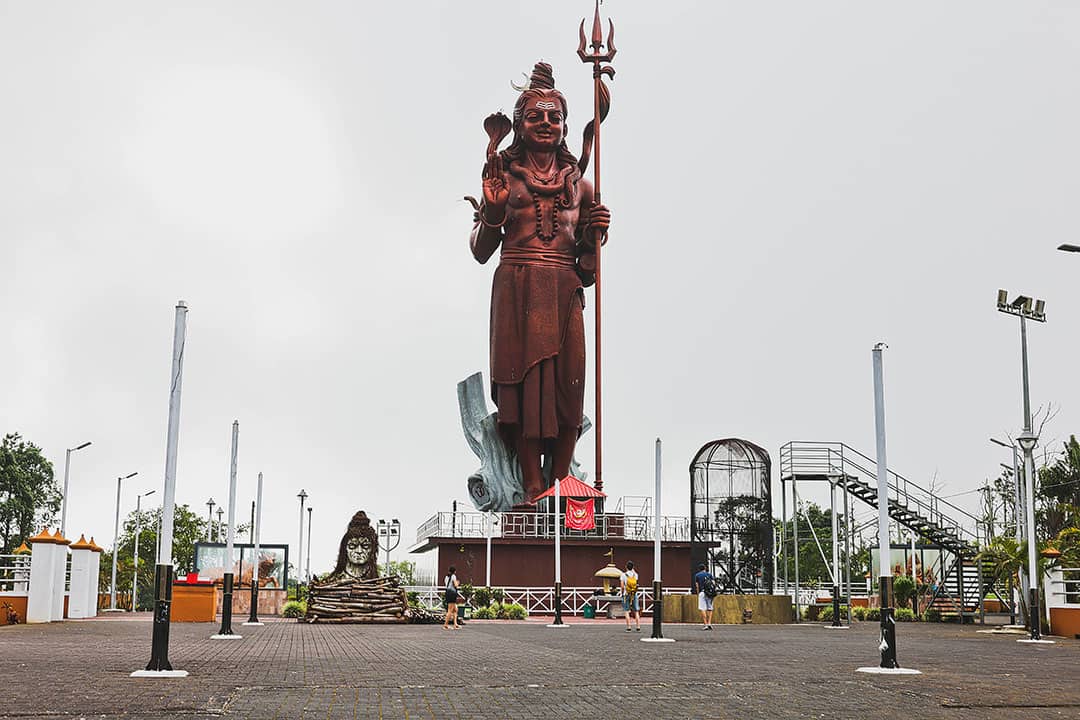
What to Eat in Mauritius
Mauritius cuisine is diverse, with a fusion of Indian and European flavors. You’ll find seafood and vegetarian dishes, curries, palm heart salads, rougaille, fish vindaye, and dholl puri.
Since we didn’t have our own car and scheduled most of our rides, we only ate lunch at local spots and had breakfast and dinner at our hotel.
- Archipel at Constance Prince Maurice (Buffet) – we had breakfast and a seafood dinner buffet. Between this and Le Fangourin, these were equally our favorite meals of our trip. They picked out the sweetest fruits.
- Asian Restaurant at Constance Prince Maurice – the satay was good, but the sushi and dumplings were just okay. We heard Japanese food has not caught on in Mauritius yet.
- Ginger Thai at the Hilton (Thai, Asian) – the Thai food was average.
- La Pomme d’Amour at the Hilton (Buffet) – just had breakfast buffets here. They have a large selection.
- Le Barachois at Constance Prince Maurice (Seafood) – great dinner in a unique floating restaurant where you can watch the fish swim around as you eat.
- Le Bois Cheri Restaurant – least favorite meal from the trip, but I don’t think the vanilla chicken fits our palette. I needed something salty or acidic to cut the sweet flavor. If you go, let us know if you try other dishes.
- Le Chamarel Panoramic Restaurant (Cajun & Creole, Vegetarian) – this had the best views (see menu here)
- Le Fangourin at L’Aventure du Sucre (French, Cajun & Creole) – this was our first meal and one of our favorite meals (see menu here). It may have set the bar too high for the rest of our trip.
- Wapalapam in Port Louis (Cajun & Creole, Seafood) – a trendy spot in Port Louis with a big menu. The in-house ice cream and sorbets were so good.



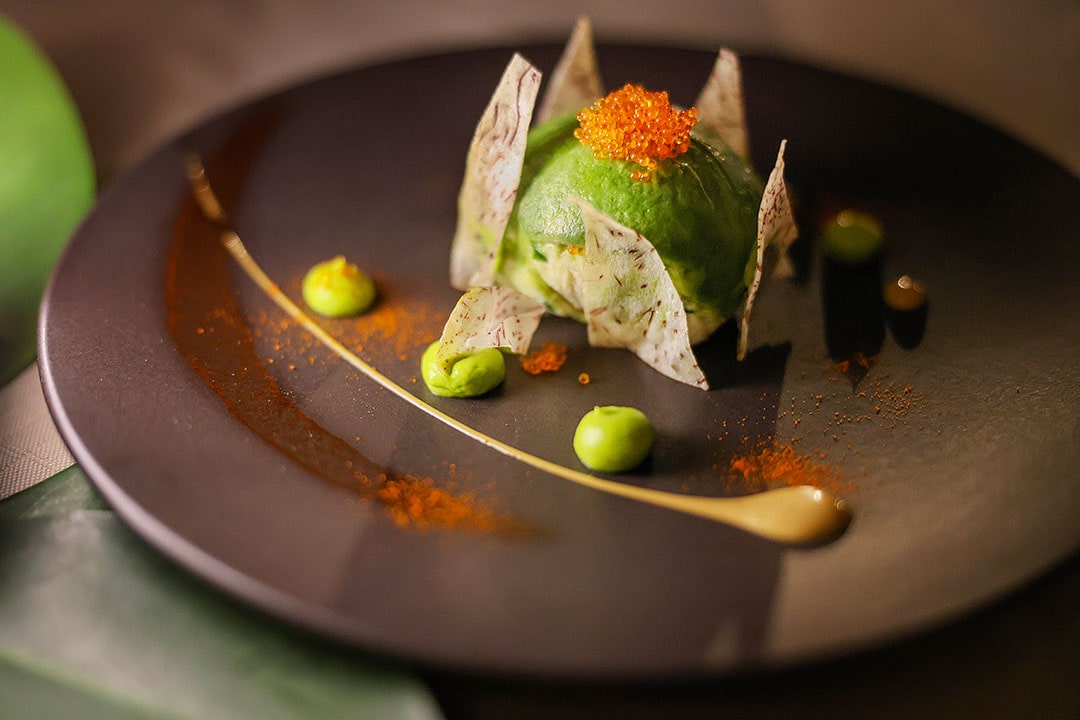
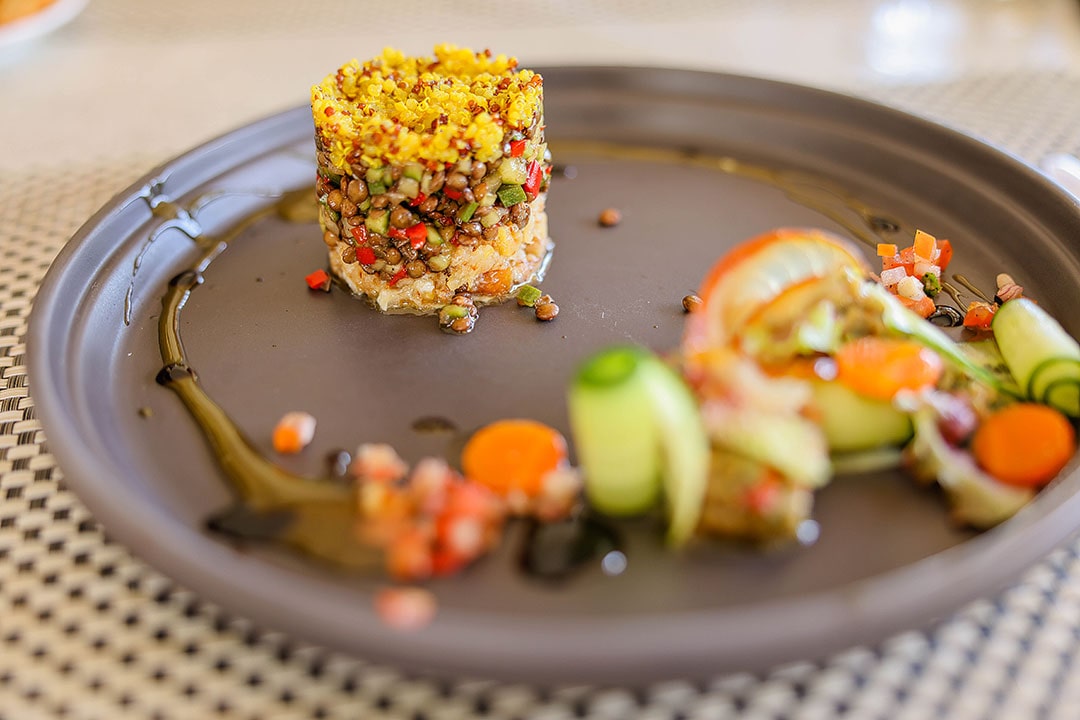
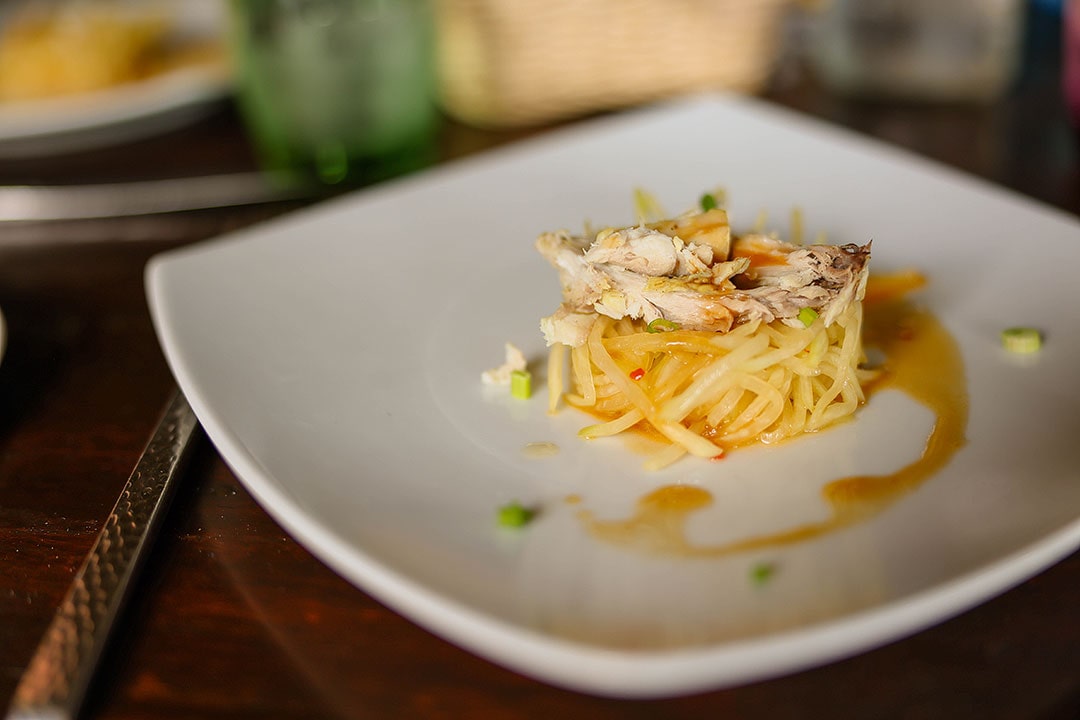
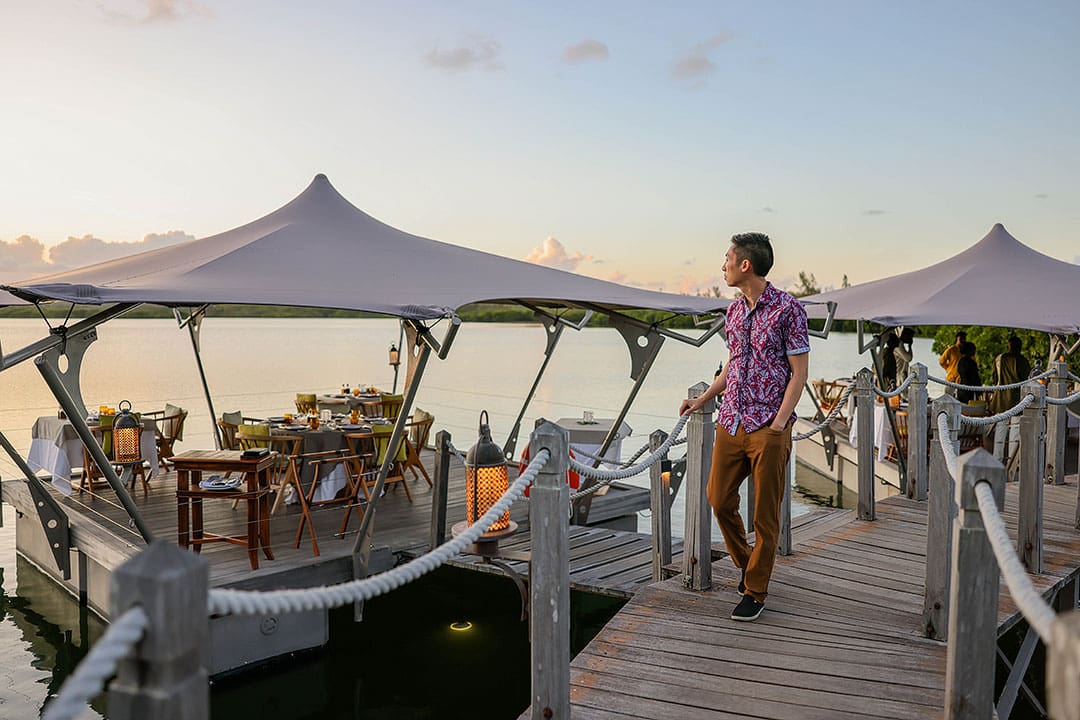
Essential Tips for First Timers
- Be prepared for two twelve-hour flights from the US, especially from the west coast. Give yourself a longer layover (6ish hours) to clear customs and stretch your legs. You can make it even longer if you want a rest day or to visit a layover city. We planned to walk around Paris, but our flights got delayed.
- If you booked a hotel with breakfast but have an early activity, you will most likely miss breakfast. Ask for a to-go bag.
- Lychee sold on the side of the road is usually MUR75-100 for 1 lb or MUR200 for 1 kg.
- Travel Times: It can take 1-2 hrs to get from one side of the island to the other. Keep that in mind when you plan activities or where you’re visiting. We had a lot of early days since we had to add in the travel time.
- Traffic on the island starts around 8 am and 4 pm. We left earlier or way later to avoid traffic.
- They usually get a cyclone each season, and every ten or so years, it will hit the island directly. The last big one was in 1992.
- The Mauritian Flying Fox are huge fruit bats you’ll see around the island. Many locals don’t like them because they feast on their fruit trees, especially lychee, banana, and mango.
- Locals drink tap water, but it isn’t recommended for visitors. We always pack this self-cleaning water bottle (see all our favorite travel water bottles) and fill it up in the fitness room in the gym.
- Phoenix is the island’s most popular local beer. Most cocktails are made with rum since they source from local rhumeries. There aren’t local grape wines, but you can find local fruit wines.
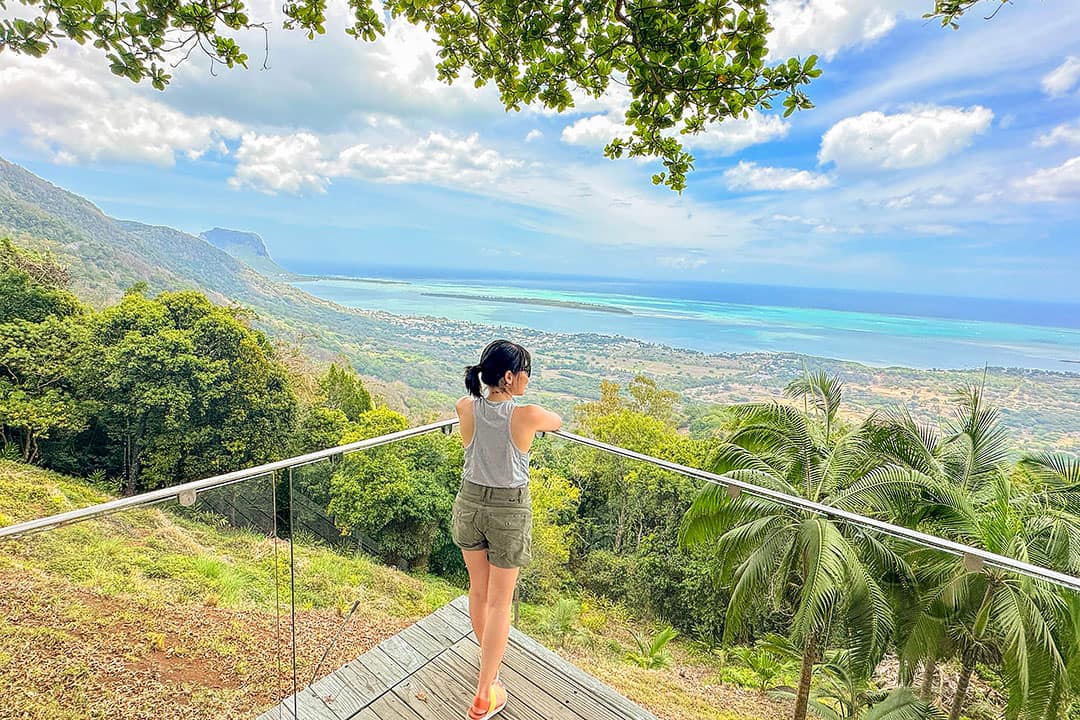
Getting to Mauritius
Getting to Mauritius requires a long journey from the US. Surprisingly, we later realized it’s almost directly opposite Las Vegas (just 300 ish miles off). For us, we flew Delta from Las Vegas > NYC > Paris. Then we got on an Air France flight from Paris > Mauritius.
By Plane: Sir Seewoosagur Ramgoolam International Airport (SSR) is located southeast of Mauritius island and has direct flights from big cities like London, Paris, and Dubai. Airlines like Air Mauritius, British Airways, Air France, Virgin Atlantic, Emirates, Qantas, and Lufthansa have direct flights from those cities.
Renting a Car: Renting an (automatic) car is an option on the island, and you don’t need an international driver’s license. Google maps worked well going to popular attractions. Just remember they drive on the left side of the road so that it can be disorienting. Roads outside the city are easy to navigate and not too crowded, but driving in a city can be stressful. Speed limits are usually around 40 kph in towns, 60 kph outside of towns, and 110 kph on the freeway.
Getting from the Airport to Your Hotel: Transfers are often included if you booked a vacation package. Otherwise, ask if your hotel offers them (they typically cost the most). You can also get a taxi. They do not measure distance; you must negotiate the price before leaving. Lastly, you can book a transfer online ahead of time.
Taxis: Cost depends on the distance and is not regulated – from Port Louis to Flic n Flac, it would cost between MUR 800 and MUR 1,000
Where to Stay
We split our stay between two different areas on the island. In general, the northern shore is more touristy, the south side is wilder, the west side is closer to popular attractions, and the east side is quieter with more luxury resorts. We planned to have many activities for the first half of our trip and relax at a luxury resort for the second half.
On our active days, we stayed at Hilton Mauritius Resort & Spa in Flic-en-Flac, located on the east side. Overall, it was fine, but this is our least favorite Hilton property we’ve stayed at. There were a few things off about the service (ie, they accidentally emptied out some of the beauty products I keep in refillable containers and tried to fix the situation but ended up forgetting).
For the second half of our trip, we stayed at the Constance Prince Maurice, a 5+ star hotel. Although both properties are considered five stars, Constance is on a different level, from the facilities and amenities to their exceptional service. They were very attentive and made sure we had everything we needed. On the day we went on a snorkeling excursion, they prepared a massive breakfast to go. Two golf courses are included in your stay. We’ll post a room tour video soon.
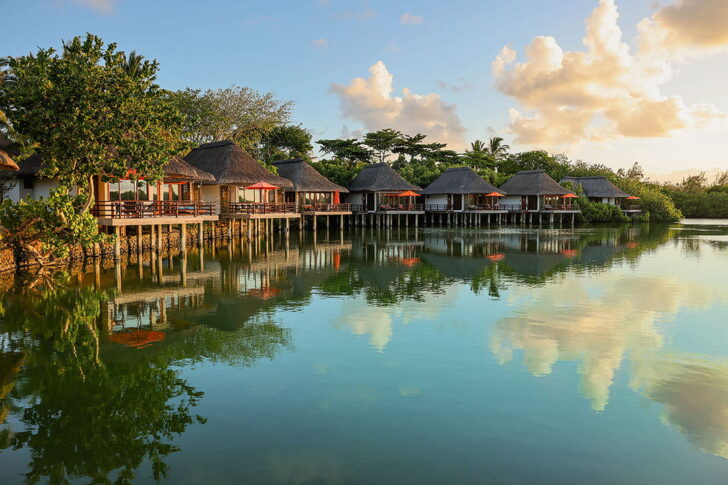
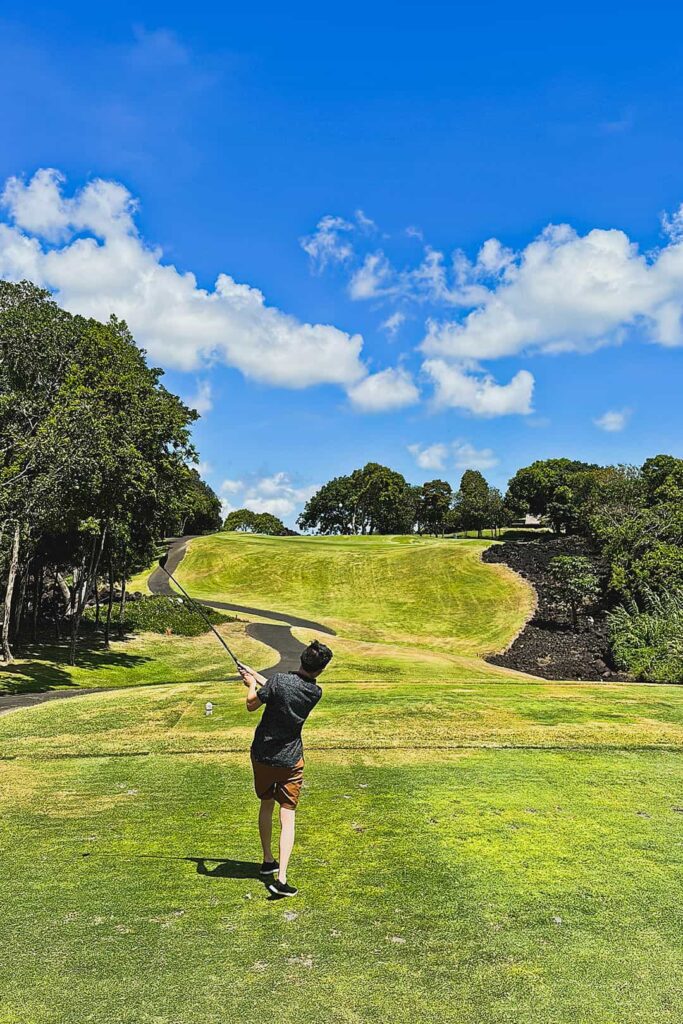


For more options on the island, search below.
Frequently Asked Questions
IS MAURITIUS CHEAP?
Mauritius isn’t considered a budget destination. Most people travel here for luxury and they pay for it. Although you can definitely travel here on a budget, it’s not a great destination if you’re looking for cheap options.
WHAT DO PEOPLE DO IN MAURITIUS?
There is a wide variety of activities on the island, including seeing natural wonders, water sports, golfing, hiking, helicopter rides, fine dining, and more. Check out the best things to do in Mauritius.
HOW MANY DAYS ARE ENOUGH IN MAURITIUS?
Because it’s so far to get to, we recommend a minimum of 7 days in Mauritius. We would have preferred to stay 10-14 days.
CAN YOU WEAR SHORTS IN MAURITIUS?
Yes! Although many hotels will have dress codes for certain restaurants.
CAN YOU DRINK ALCOHOL IN MAURITIUS?
Yes! You can get anything from cocktails to beer. They even have locally made cane rum.
WHAT SHOULD I AVOID IN MAURITIUS?
Pickpocketing can still happen in crowded markets and downtown areas so be sure to watch your belongings. Also, don’t stay at the resort during your entire visit. The island has a lot of amazing places to check out and if you just want to stay on a resort, there are plenty of other destinations for that.
DO I NEED ANY VACCINATIONS FOR MAURITIUS?
Nothing is required, although they recommend the usual vaccines. Check the CDC site for the most updated list.
WHAT SHOULD I BRING BACK FROM MAURITIUS?
Sugar, tea, and rum are great gifts to bring home from Mauritius. We brought home the first two for our friends.
WHAT IS THE CHEAPEST MONTH TO GO TO MAURITIUS?
February is currently the cheapest month to fly to Mauritius from the US. High season runs from November to January.
CAN YOU DRINK THE TAP WATER IN MAURITIUS?
As a general rule, it is safe to drink tap water in Mauritius but it also depends on how sensitive your stomach is. If there was a recent cyclone or storm, you should definitely avoid the tap water. Locals drink tap water, but it isn’t recommended for visitors. We always pack this self-cleaning water bottle (see our favorite travel water bottles) and fill it up in the fitness room in the gym.
WHICH IS BETTER MALDIVES OR MAURITIUS?
It depends on what you’re looking for! Mauritius is much larger and therefore offers a wider variety of activities and places to check out.
WHAT LANGUAGE IS SPOKEN IN MAURITIUS? DO THEY SPEAK ENGLISH IN MAURITIUS?
English is the main language, but French and Creole are also spoken extensively. Many hotel employees also speak German, Italian, and Spanish. Hindi and Bhojpuri are also spoken.
IS THE WATER IN MAURITIUS WARM?
The ocean temperatures stay between 71-80° F throughout the year with it in the warmer half during the summer and cooler half in the winter.
HOW MUCH WATER SHOULD I BRING TO MAURITIUS?
You do not need to bring water to Mauritius. You can drink the tap water or get filtered water there. We always pack this self-cleaning water bottle (see our favorite travel water bottles) or fill up in the filtered water stations in the hotel gym.
What to Pack
- Arrival Documents are not needed for Americans, British, Australians, South Africans, Canadians, and EU citizens. However, everyone must fill out this form. You can print it ahead of time to save time at customs.
- Snorkeling gear – we bring our own whenever we have two or more activities. The masks, most importantly, will leak if they don’t fit. If the fins fit, we bring them since the fins tours provide don’t always fit well and can hurt.
- Sunblock: The sun is intense in Mauritius. We underestimated it and soaked up too much sun while snorkeling. Don’t forget to reapply your reef-safe sunscreen and pack aloe for sunburns.
- Outlet Types: In Mauritius, there were C and G-type plugs. Some hotels will have USB chargers, but they are limited. Having this charger + adapter helped us stay charged.
- Bug Spray: Mosquitoes are year-round and are worse in certain areas like the national park. We got bit quite a few times, so be sure you have bug spray handy. We forgot to pack this sucker.
- Water shoes or sandals with straps are a good idea since some beaches have sharp rocks and coral.
- Cat Treats: For cat lovers, you’ll find stray cats everywhere! Tourists feed them table scraps, so many of them are friendly. Next time I’m bringing treats.
Planning Checklist
- Get comprehensive insurance for your trip.
- Find a great deal on Mauritius hotels.
- Arrange a rental car for your trip.
- Book a tour for your visit.
- Get airport lounge access.
- Buy a travel charger to keep your devices charged.
- Get a new backpack for your trip.
- Buy a Mauritius travel guide.
- Pack the appropriate shoes for your trip.
- Don’t forget your in-flight essentials.
Have you been to Mauritius? Are there things to do in Mauritius we are missing?
DID YOU ENJOY THIS POST? PIN IT FOR LATER


SEE More International City Guides
⟡⟡⟡⟡⟡
“Discovery consists not of seeking new lands but in seeing with new eyes” – M. Proust
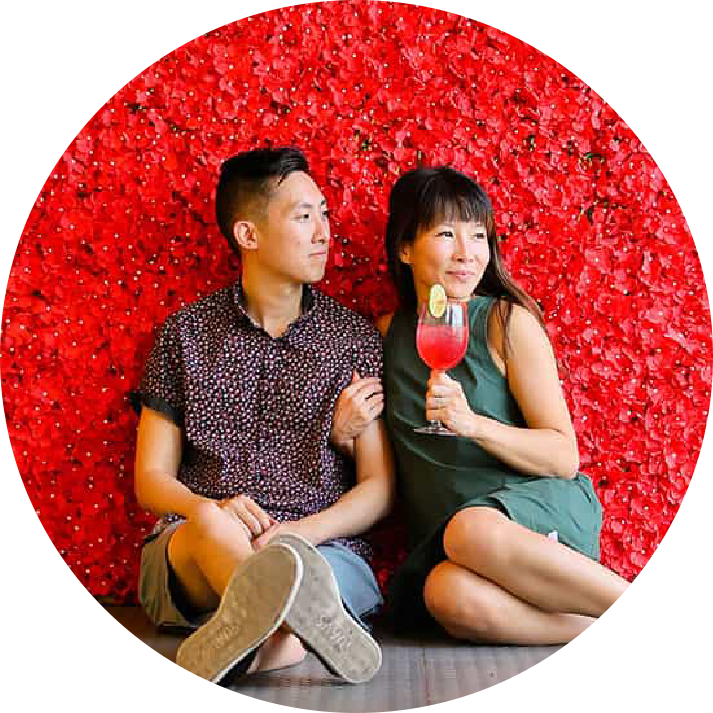
Esther + Jacob
Esther and Jacob are the founders of Local Adventurer, one of the top 5 travel blogs in the US. They believe that adventure can be found near and far and hope to inspire others to explore locally. They explore a new city in depth every year and currently base themselves in Las Vegas.
Follow on Instagram (E + J), YouTube, TikTok, and Pinterest.

